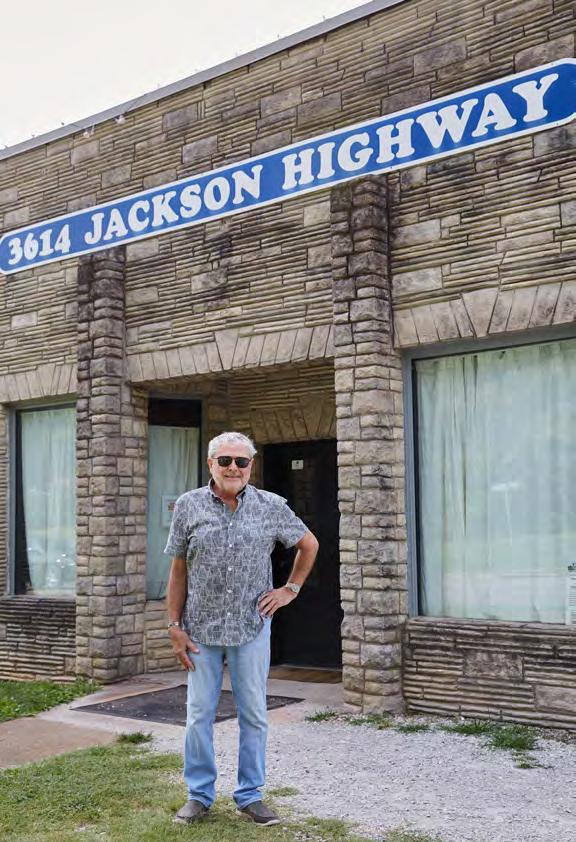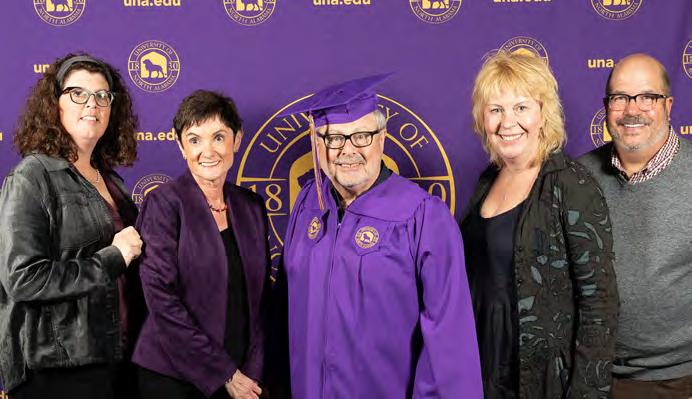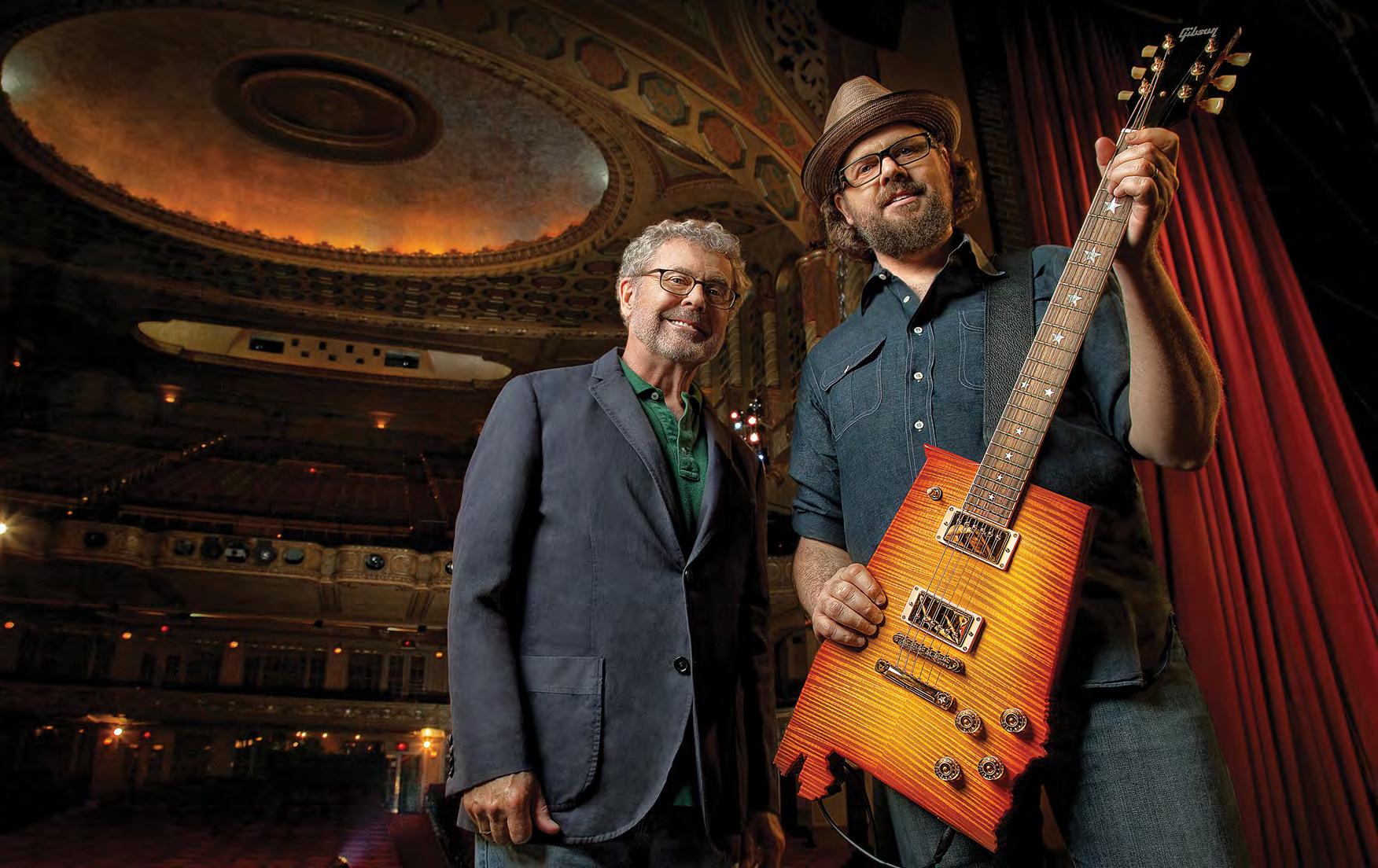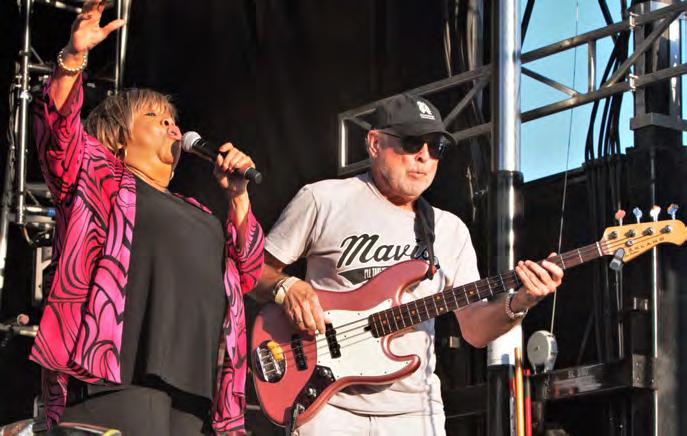














Born in Birmingham, Alabama, in 1948, Dr. Clifton Pearson is a ceramic artist who was baptized in the crucible of the Civil Rights era. Like so many people who lived through 1968, he felt forced to choose between love and hate. Clifton explains his decision this way, “During that time, there was intense interest in Black power and Black pride. And I couldn’t develop an interest in European history. A lot of artists were making angry statements, but I was looking for a positive statement. I wanted to illustrate beauty and dignity, rather than hostility.”
Looking back over 50 years of Clifton Pearson’s art, there is a beautiful expression of Black power and Black pride that he imbues with a love for humanity. He has the mind of a great teacher who shows us how to find our better selves through kind, careful, and attentive empathy. Like the greatest of great artists, he is a humble man who sees the beauty in others no matter how riddled with flaws they are. Though he does not wear religiosity on
his sleeve, he knows whose footsteps he is following. It is no wonder that he spent most of his academic career serving others as a Department Chair at three different universities. As remarkable as he was as a Chair at Alabama A&M, Stillman College, and Montevallo, his passion was for his students whose lives he could nurture, mold, raise up, and press forward into the world.
His award-filled career as a ceramic artist has a definite trajectory from youthful exuberance to sly playfulness, and then finally to a mature career of wisdom and monumentality. He often lectured on Black Art and taught ceramics on Alabama Public Television for five years. Clifton’s dissatisfaction with Western art led him to explore the beauty of African skin scarification, the richness of Hindu ornamentation, and the power of Oceanic carving. His youthful art was dense with complicated form and complex iconography. He understood that the human condition has more than two
sides, and this led him to two-headed Janus figures bristling with nobs, squiggles, nipples, and so much more. His later, more humorous side was slightly political. He mischievously created his lowcut Working Girls of Washington, DC, inscribing “Secretary to Sen Jackson” and the like on their bikinis.
“Teacher” is what Clifton calls himself, and he refuses to allow any fuss about his works of art, but I am here to blow this horn. When I first saw his Celebrated Figure series at the Montgomery Museum of Art, I almost fell over. I saw dignity and beauty. I saw majestic Black power and Black pride, but most of all, I saw an artist aspiring to the highest form of humanity and universal empathy. Similar looking forms exist in the British Museum from the Mausoleum at Halicarnassus, but unlike Pearson’s, they intimidate with authoritarian power. Dr. Pearson’s art calls out to our better angels.
Like Clifton Pearson himself, his sculptures are never, never haughty. Instead, they call out for each of us to make something grander of ourselves: every one of us. A similar-looking form is also found in Meta Vaux Warrick Fuller’s 1919 In Memory of Mary Turner: As a Silent Protest Against Mob Violence. If ever there was a work of art that focused on Black obstacles, it is this heartwrenching sculpture. The key to creating a
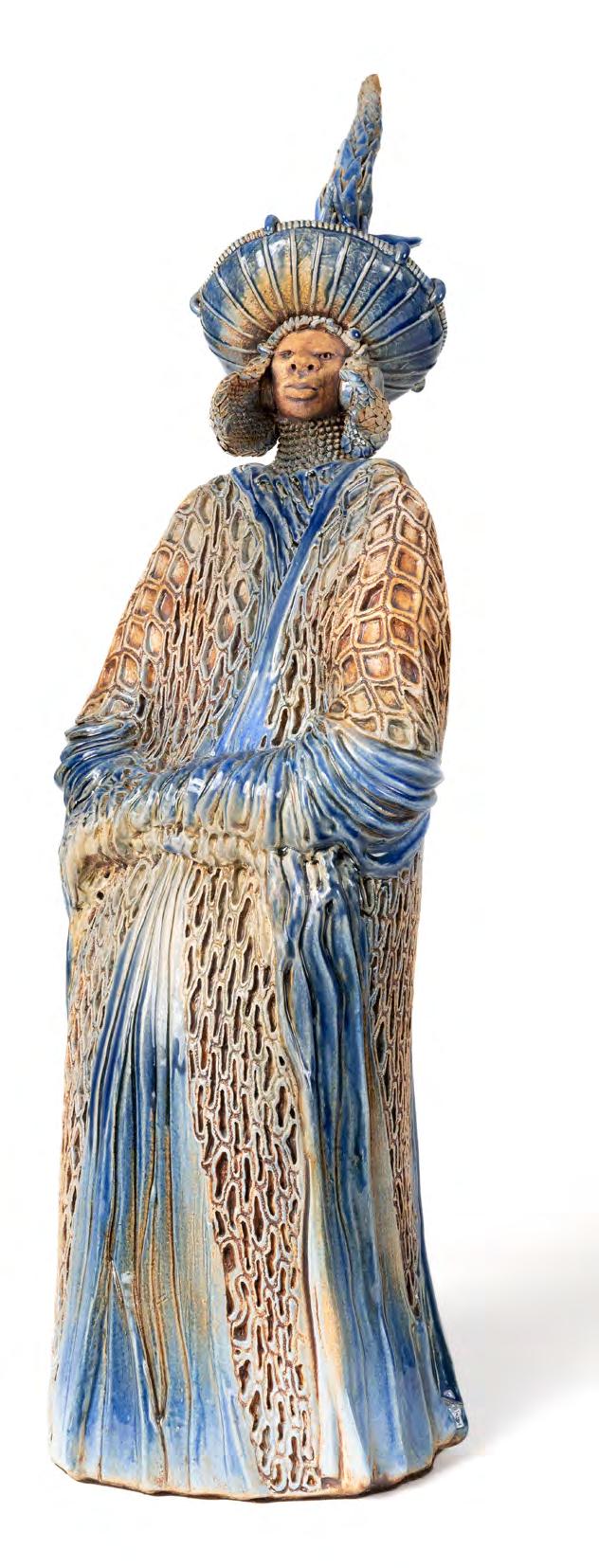 Celebrated Figure X , 2000, glazed stoneware, 31 x 11 x 13 in.
Collection of the Huntsville
Museum of Art; Gift of Alice Chang.
Celebrated Figure X , 2000, glazed stoneware, 31 x 11 x 13 in.
Collection of the Huntsville
Museum of Art; Gift of Alice Chang.
"...I wanted to illustrate beauty and dignity."
positive statement is not found in this work by Fuller, but in how Pearson responded to the horrors represented in Fuller’s art. While Fuller’s Mary Turner looks down at her impending death, Pearson’s Celebrated Figures look up to a dream in which we come to celebrate each other’s humanity, each other’s dignity, and each other’s grandeur.
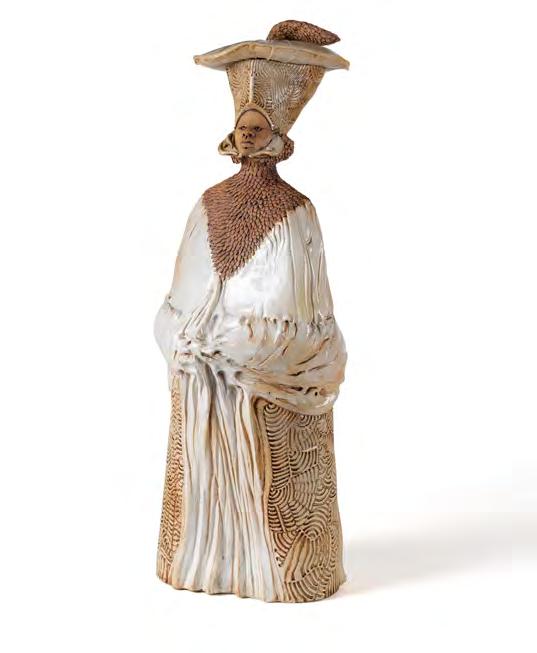
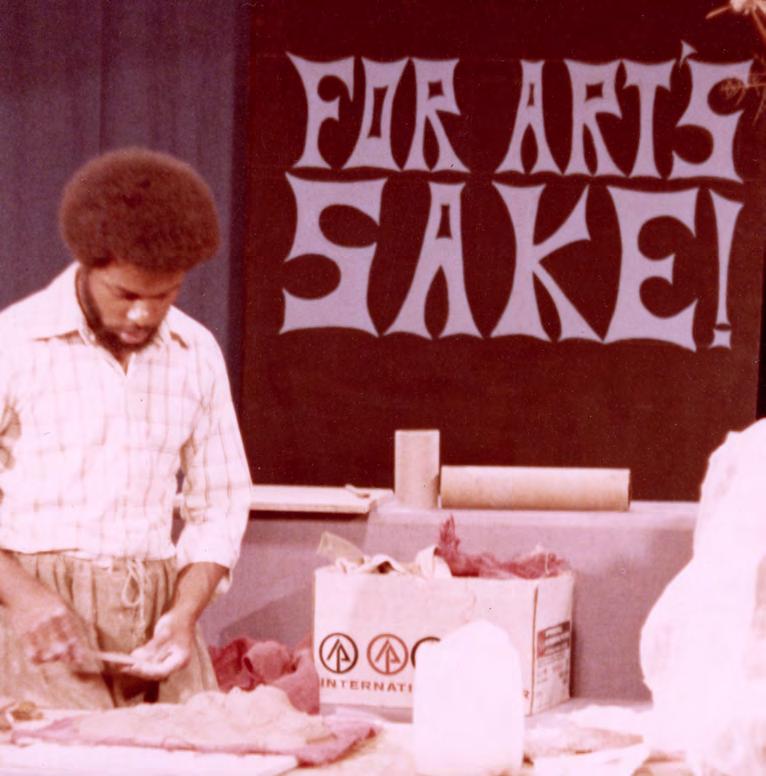
Auguste Rodin’s Balzac also helps us understand the unique character of Pearson’s Celebrated Figure with its similar outlines and forms. Balzac is a monument to the Romantic individual surveying a world in ruin. Clifton’s art is not about a world in ruin, but about building something better. It celebrates a world of empathy and beauty in which each of us can become majestic leaders to one another. There is no doubt
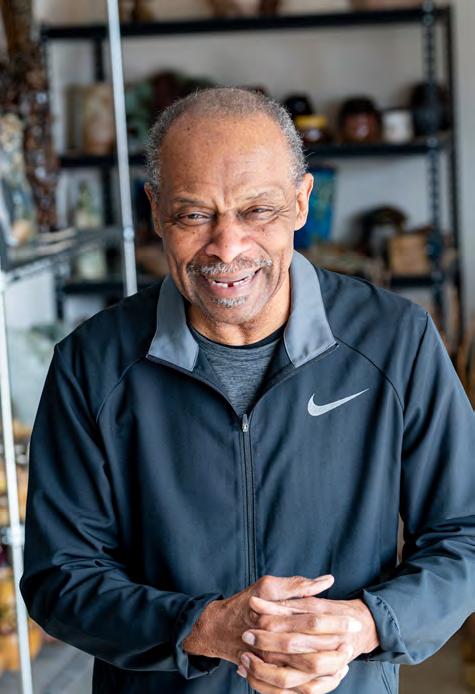
that his art references Western, African, Indian, Oceanic, and Pre-Columbian art, but his art is not simply multi-cultural. To understand his Celebrated Figures, it is important to begin with the obvious. They are single figures. They stand alone and they are monumental. The excellent art critic Tara Cady Sartorius called his Celebrated Figures “leaders.” She is absolutely correct, but to understand his art, I must add an asterisk to her comment. What makes Clifton’s art so impressive is not that it asks us to follow a leader, but that it asks us each to become one. This is the teacher in Clifton speaking. Ornamented in clay with the markings of world culture, these Celebrated Figures beckon each of us to aspire to take inspiration from Jesus, follow the example of MLK, and demonstrate the courage and
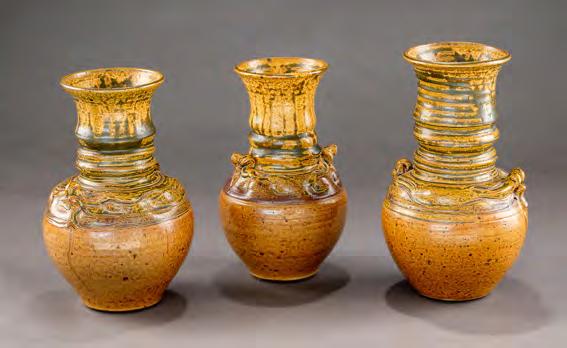
love of John Lewis. His Celebrated Figures do not ask us to bow down before them, but rather to become one with them in a community of love, respect, and universal admiration. Clifton’s content speaks with the message of Langston Hughes, “Let America be the dream the dreamers dreamed.”
The last time I spoke with Clifton, he continued to be a dreamer. He paired his life down to a few simple, beautiful words, “First the situation, then make a form, fold it together, and press it forward. Something might come of it.”
Well, something did come forward. He created generations of students and the most commanding and powerful sculptural art in the history of Alabama. ◆
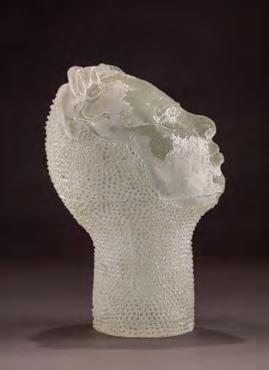
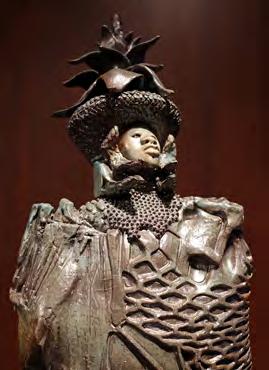
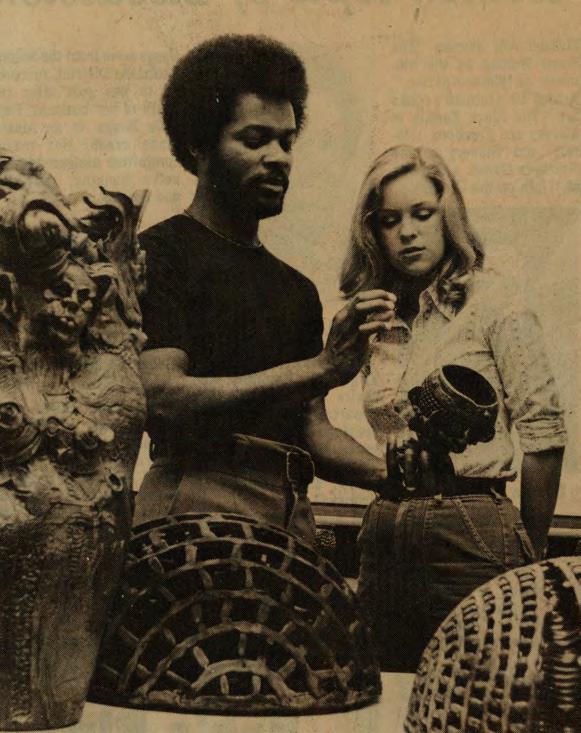
Dr. Jason Max Ferdinand first came to my attention by way of an introduction from the legendary choral pedagogue Dr. Nathan Carter, who led the Morgan State University choirs with such distinction for so many years. Dr. Carter was well known not to lavish praise on persons or events indiscriminately. So when he specifically called me on behalf of Jason to recommend him for the graduate studies program at the University of Maryland, I took notice.
After auditioning successfully for our small but highly competitive program (in fact, out of all the applicants, he was the only student accepted that year), Jason arrived in College Park. He proceeded to make good on all aspects of the description that Nathan Carter had provided. He was studious, thoughtful, gracious, and inquisitive. Lessons with him were delightful. His questions revealed a deep
thirst for knowledge. His answers revealed a mind that proceeded along both logical and creative lines simultaneously. As time went on, he also shared a sly and knowing sense of humor. But for me, the most wonderful aspect of Jason’s apprenticeship at Maryland was watching him in rehearsal with our choirs.
Jason demonstrated from the very beginning a quality in rehearsal that I have tried ever since to encourage and develop in all of our conducting students – what I have named “cheerful insistence.” This quality manifests itself as a calm and seemingly infinite capacity for steady and incremental improvement, for continuous attention to detail, and for artistic commitment and intellectual respect for the musical work at hand – all the while working with joy and an open heart. Jason simply will not settle for less than what the music demands or less than what
Governor’s Arts Award
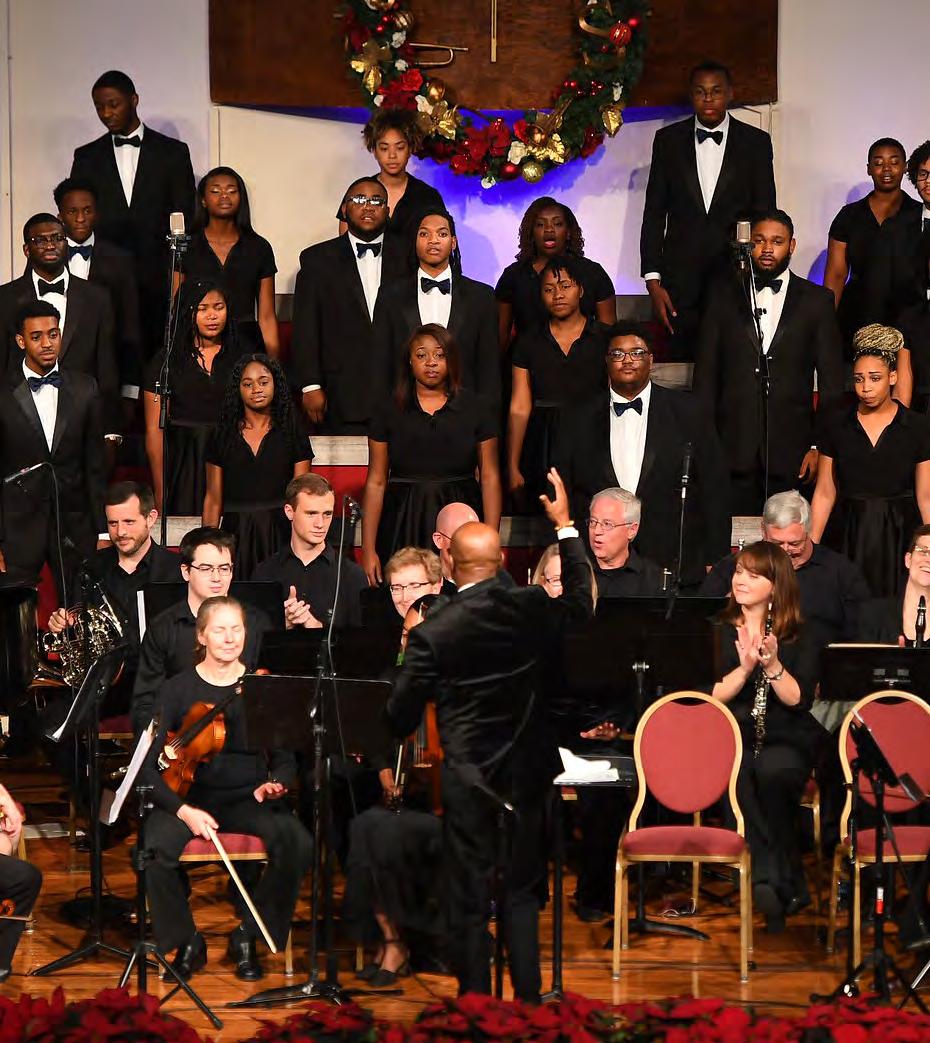
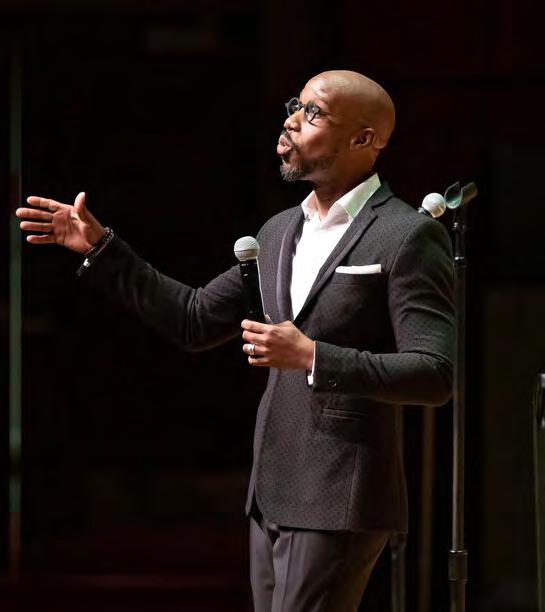 Clockwise from top: Dr. Jason Max Ferdinand, contributed; Jason conducting his students. Photo: Eric Gray.
Clockwise from top: Dr. Jason Max Ferdinand, contributed; Jason conducting his students. Photo: Eric Gray.
the ensemble is capable of producing. But he does it in such a way that the ensemble members always feel energized and inspired to travel that path with him. There is no pressure, no negativity, no judgment. There is accountability, a high standard of achievement, a clearly defined goal. But it is all done with Jason’s “cheerful insistence.” And everyone in the room commits to it. It’s the closest thing to a choral music magic trick that I have ever witnessed!
Since completing his studies at the University of Maryland and returning to his undergraduate alma mater Oakwood University, Dr. Ferdinand has carved out not just an admirable teaching and performing career for himself. He has become a bona fide superstar in the choral world. The Oakwood Aeolians have a fully established national and international reputations for excellence, with prize-winning performances at major music competitions, national tours, and appearances at prestigious professional conferences. His recently formed professional ensemble, the Jason Max Ferdinand Singers, has, in a very short time, garnered worldwide attention and critical acclaim.
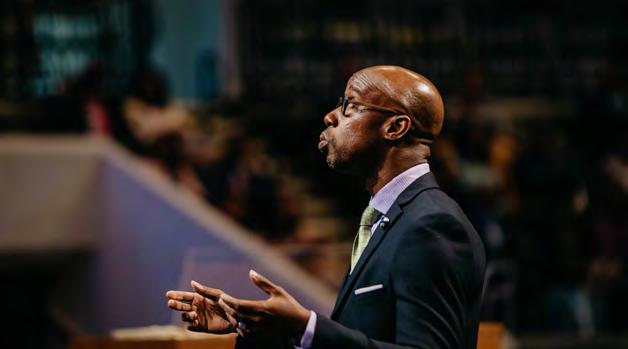
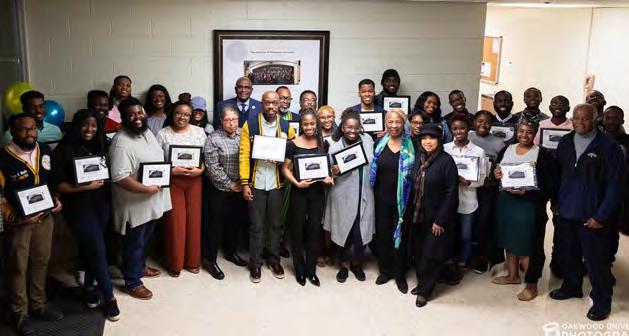
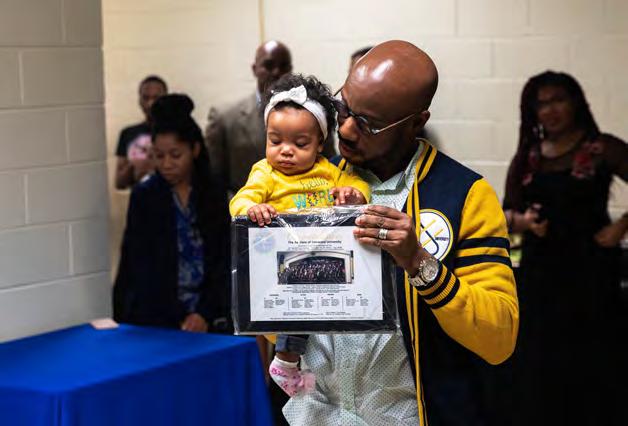
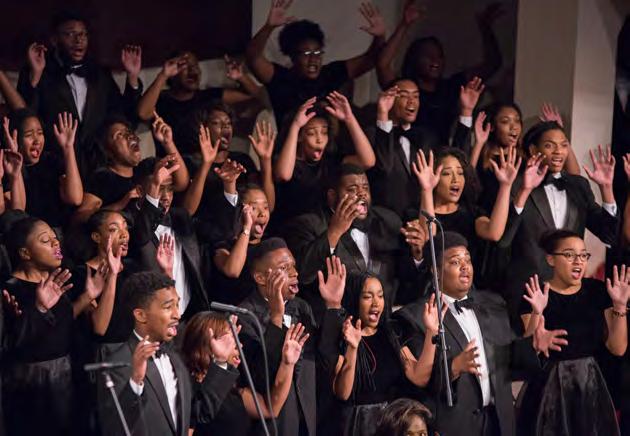
...a bona fide superstar in the choral world.
Jason is now in demand as a guest conductor and choral clinician throughout the United States and around the globe.
As he takes the reins of the program from which he received his Doctor of Musical Arts degree, I am so excited and happy for the University of Maryland’s students, present and future. They are about to receive a wonderful gift!

So many excellent conducting students have granted me the privilege of guiding their studies over the past two decades at the University of Maryland School of Music. Jason not only ranks at the very top of that distinguished list of artists, but he has also become a treasured and close friend and a trusted and respected colleague. Our discussions about music, conducting, and teaching are conversations that provide me such enjoyment and fulfillment that as soon as one ends, I immediately look forward to the next.
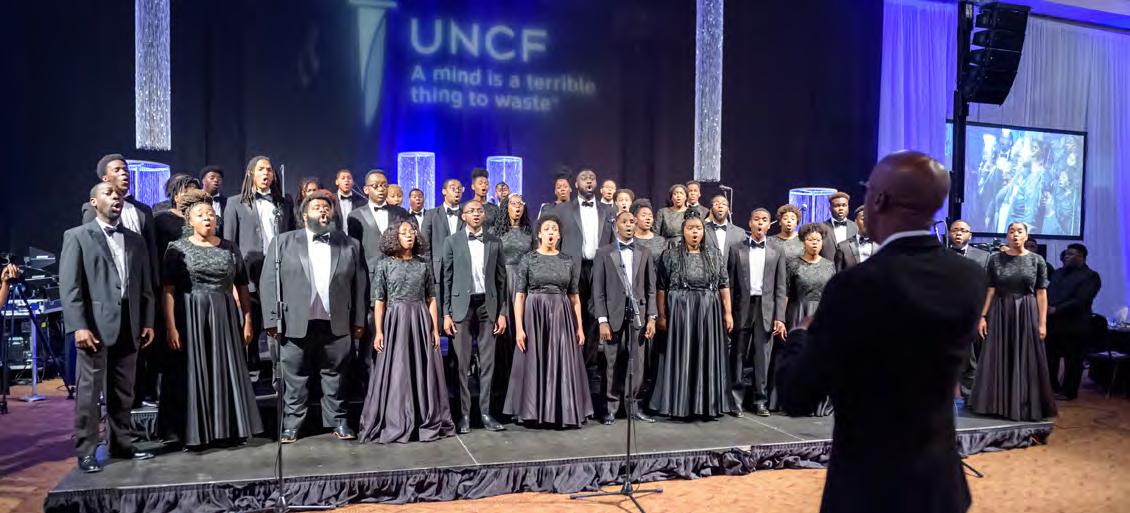 Opposite page, clockwise from top left: The Aeolians in concert; Jason during Oakwood University's 2019 Spring Baccalaureate ceremony; Jason with his daughter, Jamē; Jason, the Aeolians, and their supporters celebrate their 2018 Champion Gold Medal from the 10th World Choir Games in Tshwane, South Africa. Photos: Teymi Townsend, Oakwood University.
Opposite page, clockwise from top left: The Aeolians in concert; Jason during Oakwood University's 2019 Spring Baccalaureate ceremony; Jason with his daughter, Jamē; Jason, the Aeolians, and their supporters celebrate their 2018 Champion Gold Medal from the 10th World Choir Games in Tshwane, South Africa. Photos: Teymi Townsend, Oakwood University.
As the transition of my retirement and his leadership of the Maryland program takes shape, I am struck more than ever by his great humanity, generosity of spirit, intelligence and insight, and quiet confidence.
The students at Oakwood University and the state of Alabama’s arts community have been the fortunate recipients of Jason Ferdinand’s presence in their midst for a number of years now. I hope that this opportunity to share Jason’s prodigious gifts with the University of Maryland, the Washington, DC metro community, and the world is celebrated by all.
I am certain that Jason’s musical gifts, pedagogical skills, beautiful spirit, and the magic of his “cheerfully insistent” spell will be displayed fully to everyone he encounters and that his star will burn ever more brightly in the coming years. I look forward to witnessing that and hearing the fruits of his labors.
There is so much great music-making to look forward to! Jason Ferdinand genuinely embodies greatness and grace placed in the service of the arts.
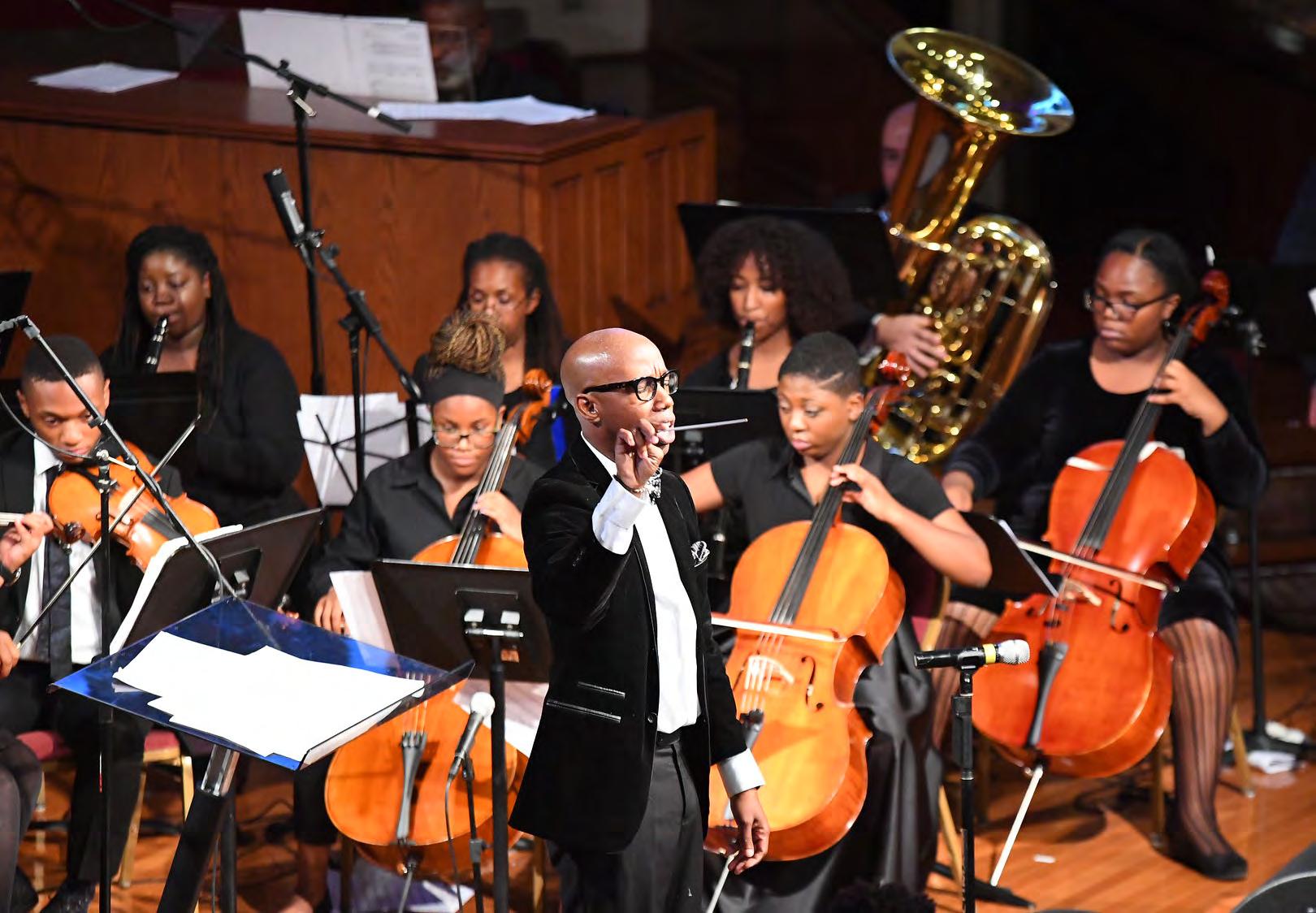 Above: Jason conducts during the Aeolian's winter concert in 2016. Opposite page, clockwise from top: Oakwood University's Aeolians with Dr. Ferdinand; the Aeolians perform at a concert at Oakwood University.
Photo: Teymi Townsend, Oakwood University; Jason in 2018, contributed.
Above: Jason conducts during the Aeolian's winter concert in 2016. Opposite page, clockwise from top: Oakwood University's Aeolians with Dr. Ferdinand; the Aeolians perform at a concert at Oakwood University.
Photo: Teymi Townsend, Oakwood University; Jason in 2018, contributed.
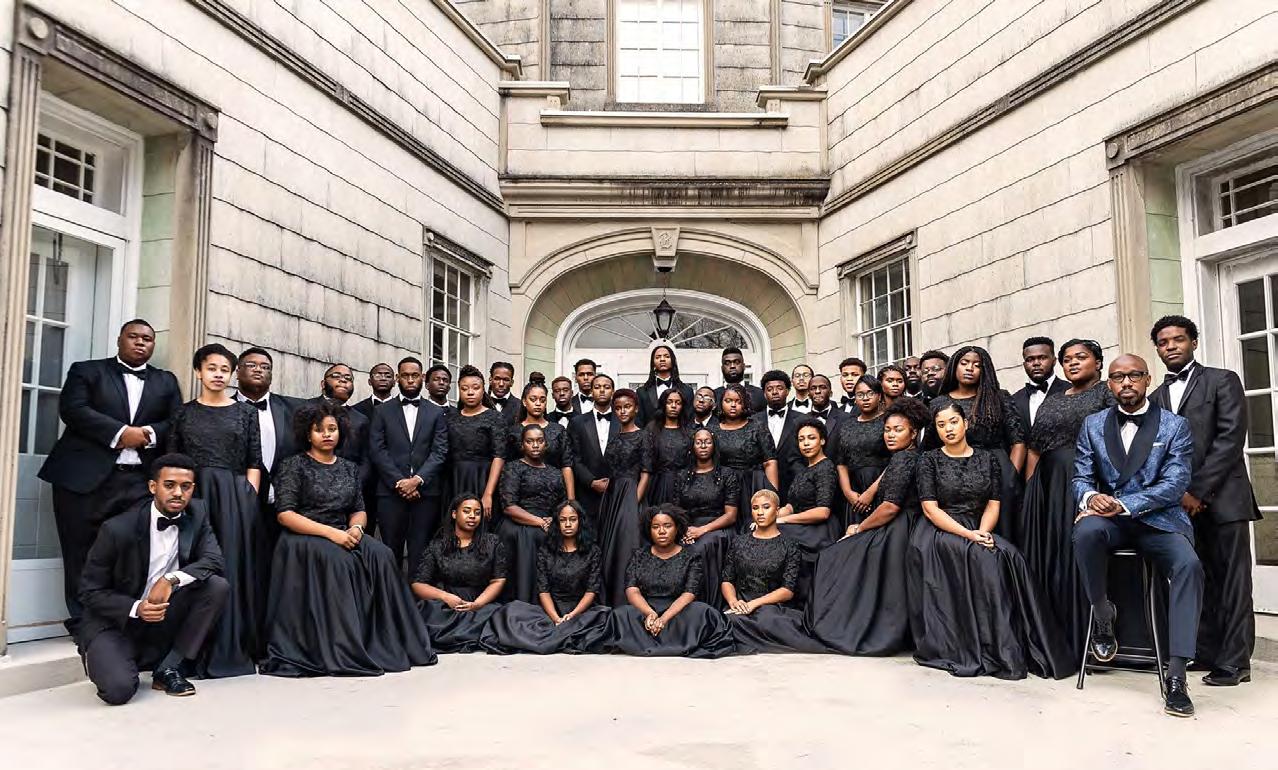
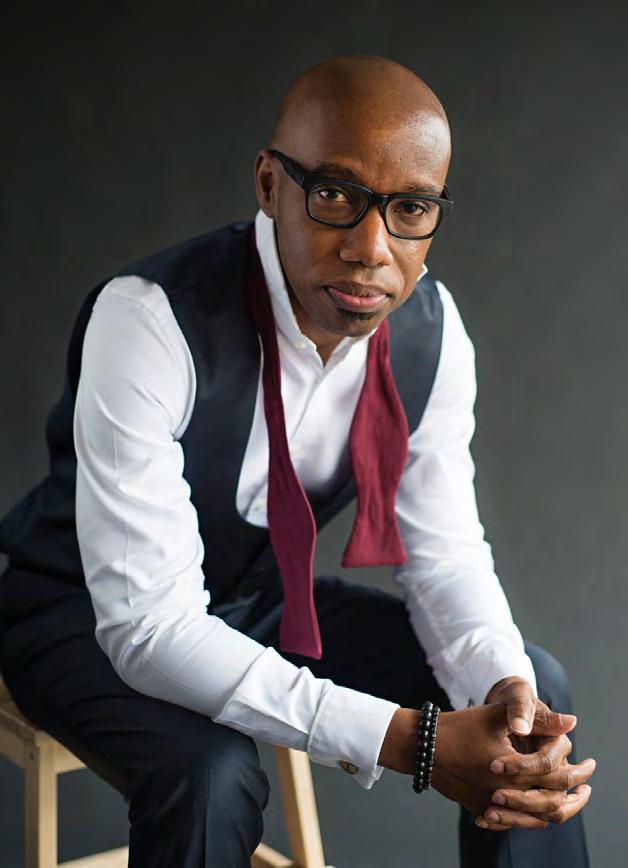
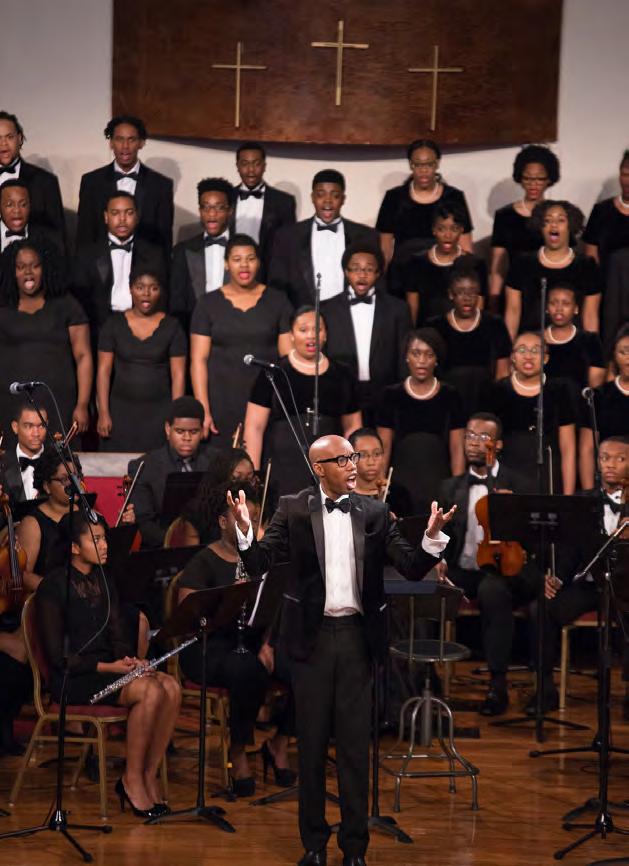
There is no doubt about it: Wes Chapman was born to dance. How else could a young man from small-town Alabama rise through the ranks of one of the most significant ballet companies in the world?
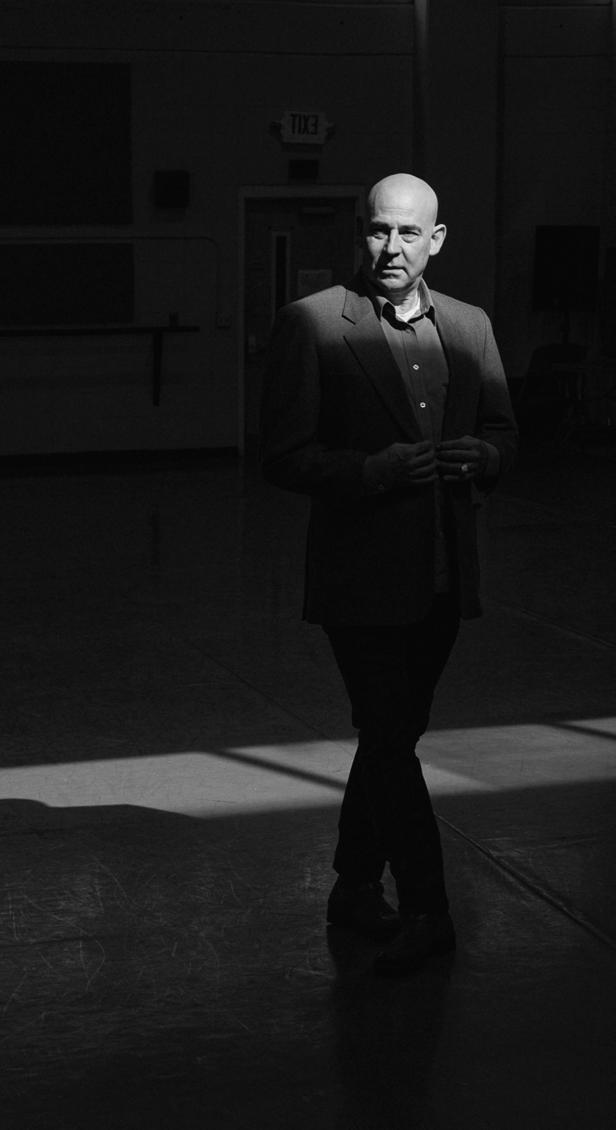
Wes was born in Union Springs, a small historic town in southeast Alabama. At age 9, he began his ballet training with Ms. Emily Caruso and Mr. Duane Dishion, both outstanding teachers. His mother drove him from Union Springs to Montgomery every day so he could train. ”I did not feel like I was alive until I started ballet,” Wes recalls.
The first time I saw Wes perform, we were both around 12 years old. I was training under Dame Sonia Arova at the Alabama School of Fine Arts (ASFA), and we took a field trip to the Montgomery Ballet to see the “boy wonder” dance. And that he was!
His technique was flawless. Wes had beautiful lines and could execute complex steps usually achieved only by professionals. That evening, he performed
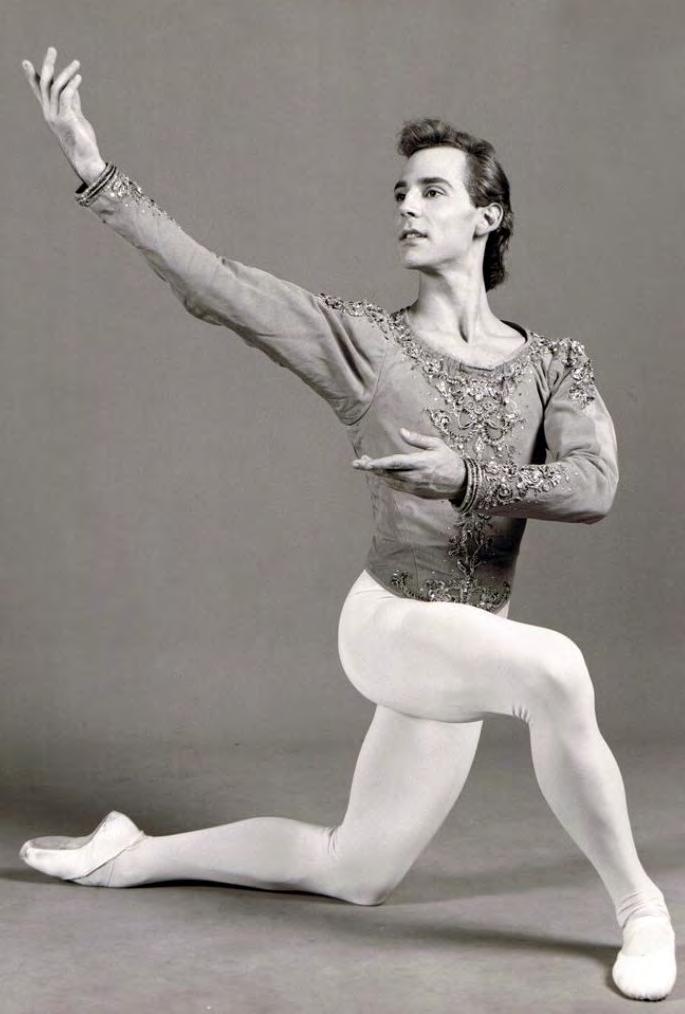

the lead role in Les Sylphides. As a dancer, I was critical and looked for every flaw. Yet, afterward, I walked away thinking, “Now that’s extraordinary talent!”
Wes and I met again during a summer dance workshop held at ASFA. Afterward, Wes continued to study in Montgomery while I studied in Birmingham. We would not see each other again until three years later, at the School of American Ballet’s summer intensive workshop in New York City. We were both ecstatic to discover a fellow Alabamian in pas de deux class, and the two of us became fast friends. That summer, a partnership formed on and off stage.
During that time in New York, I asked Wes to think about training at ASFA, and he joined our class sophomore year. He received many accolades in dance,
including the Duane Dishion Award and the Prix d’ excellence de Danse Award, upon graduation in 1983. The following year, Wes danced with the Alabama Ballet under Dame Sonia Arova. I stayed in Birmingham so we could continue working together. Wes was such a natural partner, and we enjoyed an unspoken connection on stage.
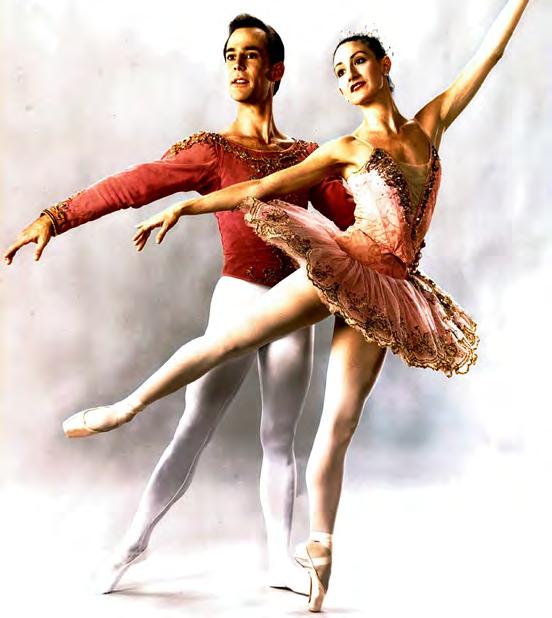
We were set to dance together at the 1984 International Ballet Competition in Helsinki, Finland. But that did not happen because renowned dancer and choreographer Mikhail Baryshnikov handpicked Wes (at age 19!) to join American Ballet Theatre (ABT). So once again, our paths diverged... if only for a brief period.
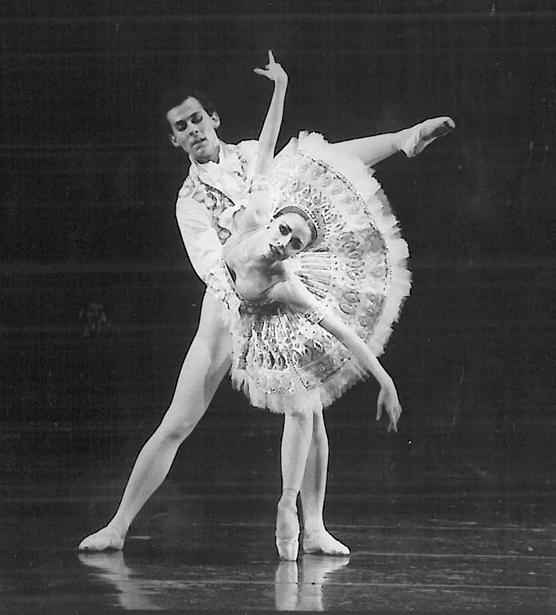 Above, L to R: Amanda McKerrow and Wes Chapman in Ballet Imperial. © The George Balanchine Trust. Photo: Paul B. Goode, courtesy American Ballet Theatre; Wes Chapman and Shawn Black, courtesy of Shawn Black.
Above, L to R: Amanda McKerrow and Wes Chapman in Ballet Imperial. © The George Balanchine Trust. Photo: Paul B. Goode, courtesy American Ballet Theatre; Wes Chapman and Shawn Black, courtesy of Shawn Black.
"I did not feel like I was alive until I started ballet."
The next year, a dream came true for both of us when I joined Wes at ABT. Dancing with Wes was like reading your favorite novel repeatedly. The feeling of complete ease on stage. Wes made dancing magical for me. He allowed me to completely abandon myself on stage as Sugar Plum Fairy in The Nutcracker. We enjoyed competing to see who could do the most turns or balance the longest in Don Quixote.
I remember walking together in New York City one day, looking at the Empire State Building. He turned to me and said, “Well, we made it!” It was one of those rare
moments in life when it strikes you for the first time that you have realized a dream.
Wes had undeniably “made it.” He became a Soloist in 1987 and, soon after, in 1989, a Principal, the highest rank a dancer can achieve. With American Ballet Theatre, he performed all the leading roles in the repertoire, including Prince Siegfried in Swan Lake, Romeo in Romeo and Juliet, Franz in Coppelia, and Prince Desire in Sleeping Beauty. Wes also performed in works by many 20th-century master choreographers, including George Balanchine, Agnes de Mille, Frederik Ashton,
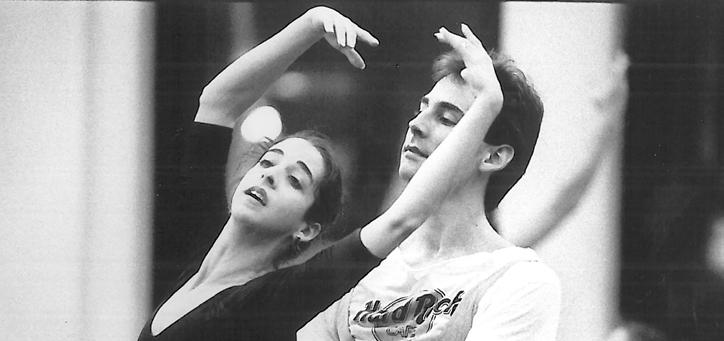
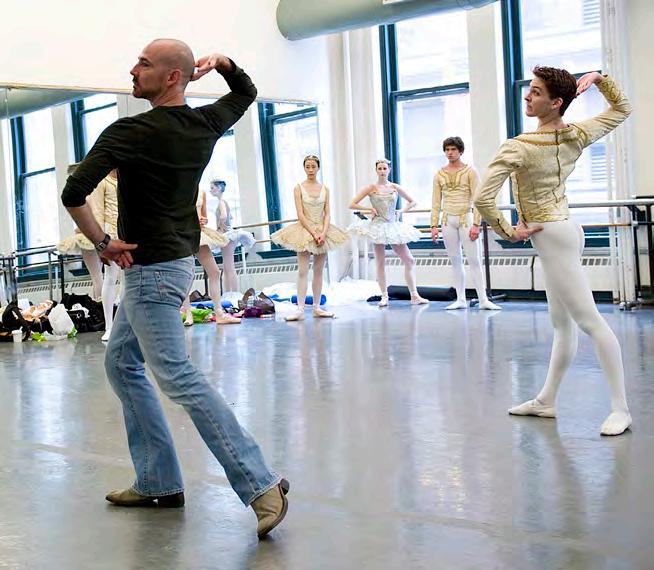
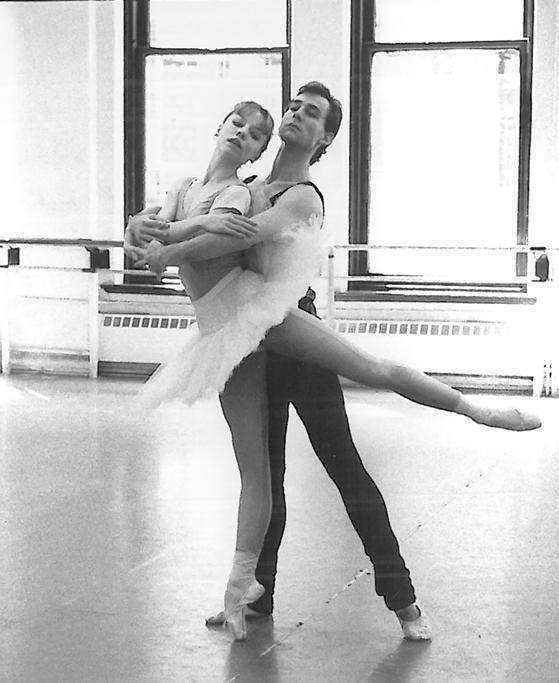
Mats Ek, Twyla Tharp, Mark Morris, Merce Cunningham, and Antony Tudor.
In a 1987 review, The Los Angeles Times wrote: “Courtly Southern charm comes in handy when you are the Nutcracker Prince and Alabama-born Wes Chapman – dancing the role in American Ballet Theatre’s The Nutcracker for the first time, Sunday afternoon at the Shrine Auditorium – was the most gracious cavalier imaginable… His beats were clean, his turns finished neatly, and his elegant line retained its nobility in coasting jetes.”
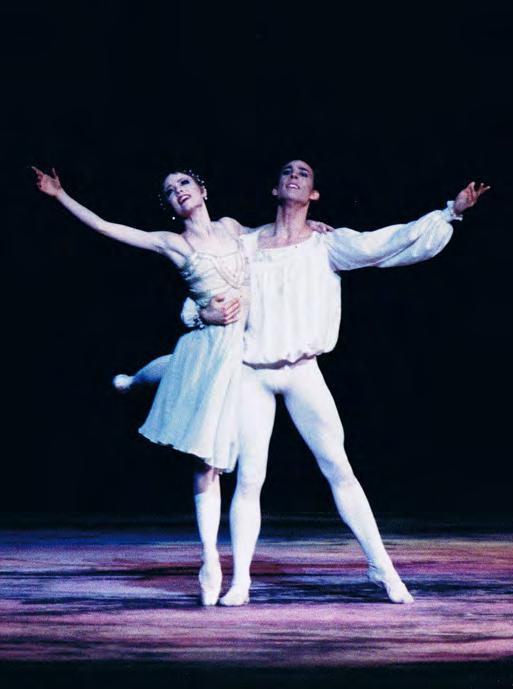
While with ABT, Wes created roles in Clark Tippet’s Bruch Violin Concerto No. 1 and Twyla
Tharp’s The Elements. He also guest-starred with several ballet companies – Hamburg Ballet, English National Ballet, Teatro Colon in Buenos Aires, and Finnish National Ballet – dancing on some of the world’s greatest stages.
People often ask Wes what he would be if he wasn’t a dancer. His response: “I would be trying to be a dancer.“
In 1993, he left ABT to join the Bavarian National Ballet of the Munich Opera. His repertoire included Puck in John Neumeier’s A Midsummer Night’s Dream, Colas in Frederick Ashton’s La Fille mal gardée, and Onegin in John Cranko’s Eugene Onegin. He then returned to American Ballet Theatre in 1995 for one season.
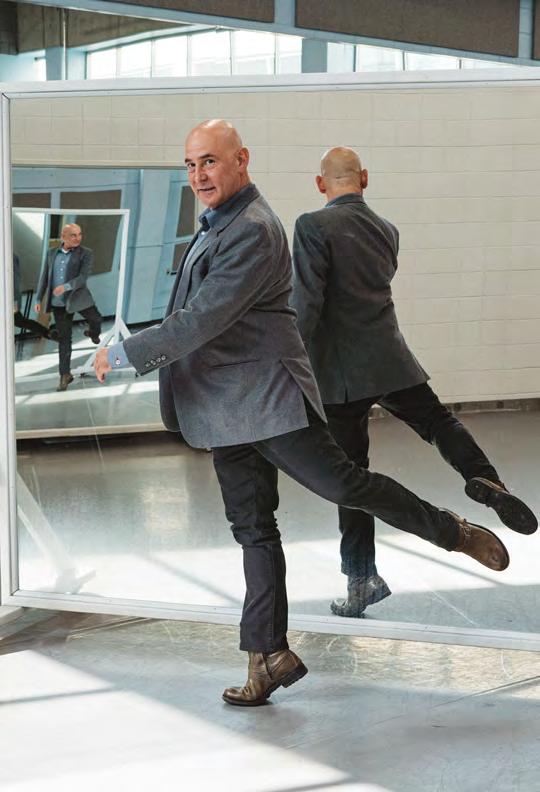 Wes in the studio at the Alabama School of Fine Arts, 2022, photographed by Kelsey Justice.
Amanda McKerrow and Wes Chapman in Romeo and Juliet, Photo: American Ballet Theater, courtesy of Wes Chapman.
Wes in the studio at the Alabama School of Fine Arts, 2022, photographed by Kelsey Justice.
Amanda McKerrow and Wes Chapman in Romeo and Juliet, Photo: American Ballet Theater, courtesy of Wes Chapman.
Like Wes, I was born (and trained) in Alabama. What excites me most in reflecting on his career is that Wes never forgot where he came from. After traveling the world, he returned home to Alabama to invest in the dance community that had given him so much.
In 1996, Wes became Artistic Director of Alabama Ballet. He worked to improve the quality of the programs and facilities of the Ballet, as well as its relationship with other arts groups. During his decade of leadership, the company grew from 16 dancers to 44 professionals and apprentices and attracted dancers from all over the world. He led a capital campaign to build a building that houses Alabama Ballet and the Alabama Ballet summer program. Wes restaged many full-length classical ballets for Alabama Ballet, including Swan
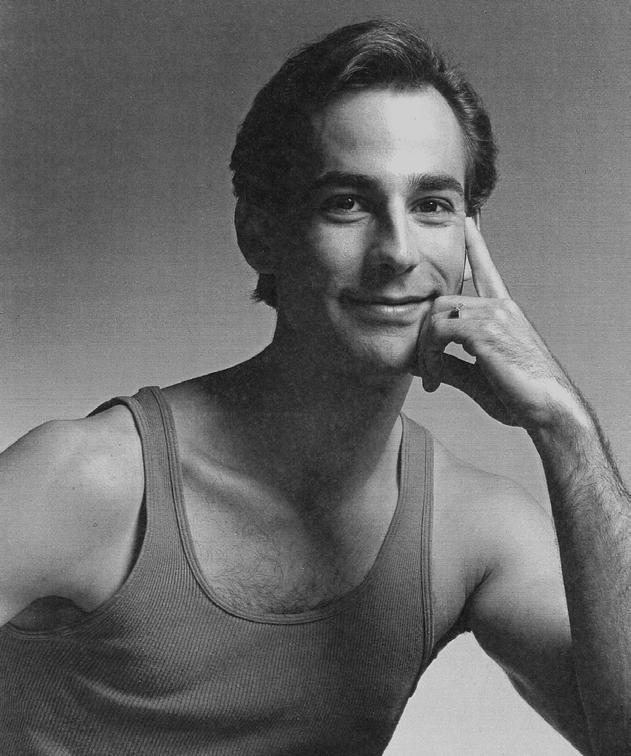
Lake, Don Quixote, Sleeping Beauty, Giselle, and Coppelia. Notably, he was responsible for acquiring Balanchine’s Nutcracker, which the company still performs. Because of Wes’ vision, the Alabama Ballet is still flourishing today.
Roger VanFleteren, Associate Artistic Director of Alabama Ballet, said, “Wes Chapman is an incredible leader. He put the Alabama Ballet on the map. He increased the budget by over a million dollars and started the Alabama Ballet school. He had the board build a brand-new building. He continued to build our inner-city dance program City Dance. Wes brought in several guest choreographers and also danced for the company. I am honored and proud to have been his ballet master and later associate director and resident choreographer.”

Jennifer Lauren was a member of the Alabama Ballet for nine years, under the direction of Wes. She has now risen to the rank of Principal at the Miami City Ballet. “Wes Chapman is the reason I am a Principal Ballerina. He showed a great amount of interest in me and inspired me to be the artist I am today. Not one performance goes by for me without applying everything I learned from Wes,” said Jennifer.
In 2006, Wes returned to American Ballet Theatre as ballet master. For the next four years, he was artistic director of American Ballet Theatre’s second company, ABT II (now the ABT Studio Company). He oversaw the summer intensive at the University of Texas, Austin, ABT’s Works and Process series at the Guggenheim Museum, Young People’s Ballet Workshop, and ABT Kids.
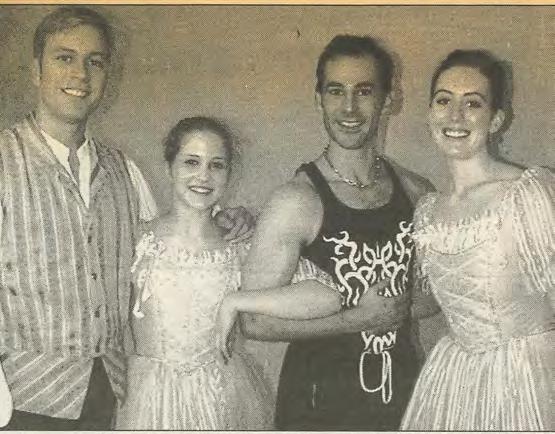
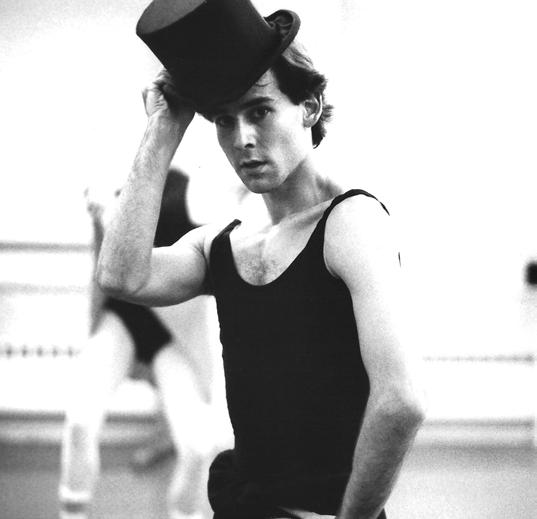
Wes became Chair of the Department of Dance at the Alabama School of Fine Arts in 2016, following in the footsteps of those who had instructed us some 30-odd years prior.
“The current economic, political, and social climate of the world is asking us to reexamine our curriculum content to better serve everybody and every body that dances out the door. ASFA Dance is working on change. The faculty is currently examining the existing dance curriculum and its relationship to current best practices related to diversity, equity, and inclusion, both in the field of dance and the greater world at large,” says Wes.
Wes continues to be a visionary in shaping young dancers, giving them the opportunity to fulfill their dreams. I have now joined him as a ballet teacher at the school, resuming the partnership that started so many years ago.
As Dance Chair, Wes has inspired many students to push outside of their comfort zone and reach beyond what they thought they were capable of. As a result, there are currently three ASFA Dance alums at Juilliard, and a fourth was just accepted.
Above: Roger VanFleteren, Elizabeth Haddock, Wes Chapman, and Erin Roy. Photo: Evelyn Johnson, courtesy of Alabama Ballet. Left: In rehearsal at 890 Broadway, courtesy of Wes Chapman.”Mr. Chapman instilled a work ethic in me which pushed me to go beyond what I thought my physical and mental abilities were. He revealed the importance of drive, effort, and having an attitude that says, ‘I want to be here.’” said Ellie Crawford, who will be attending Julliard this fall.
“ASFA is where I had the turning point. It helped me to become the professional that I became. Giving back to ASFA as the Dance Chair was full circle for me,” Wes recently told me.
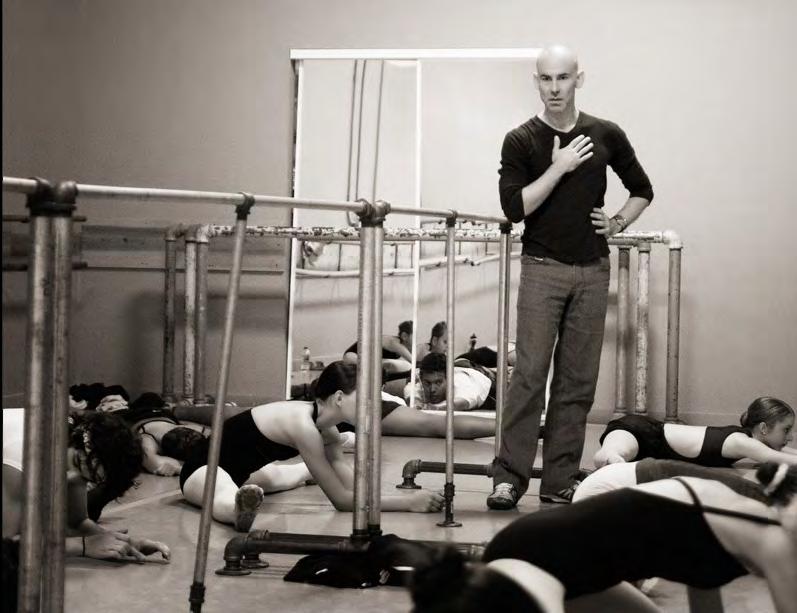
“Wes came to Alabama and made it a better place to dance!” Roger VanFleteren added.
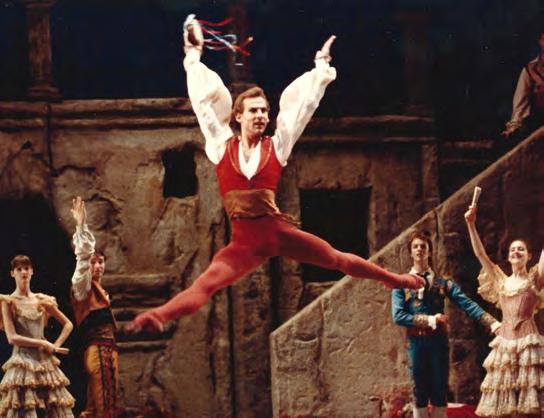
For myself, it is a privilege to work with such an incredibly gifted and talented dancer, teacher, and friend. ◆
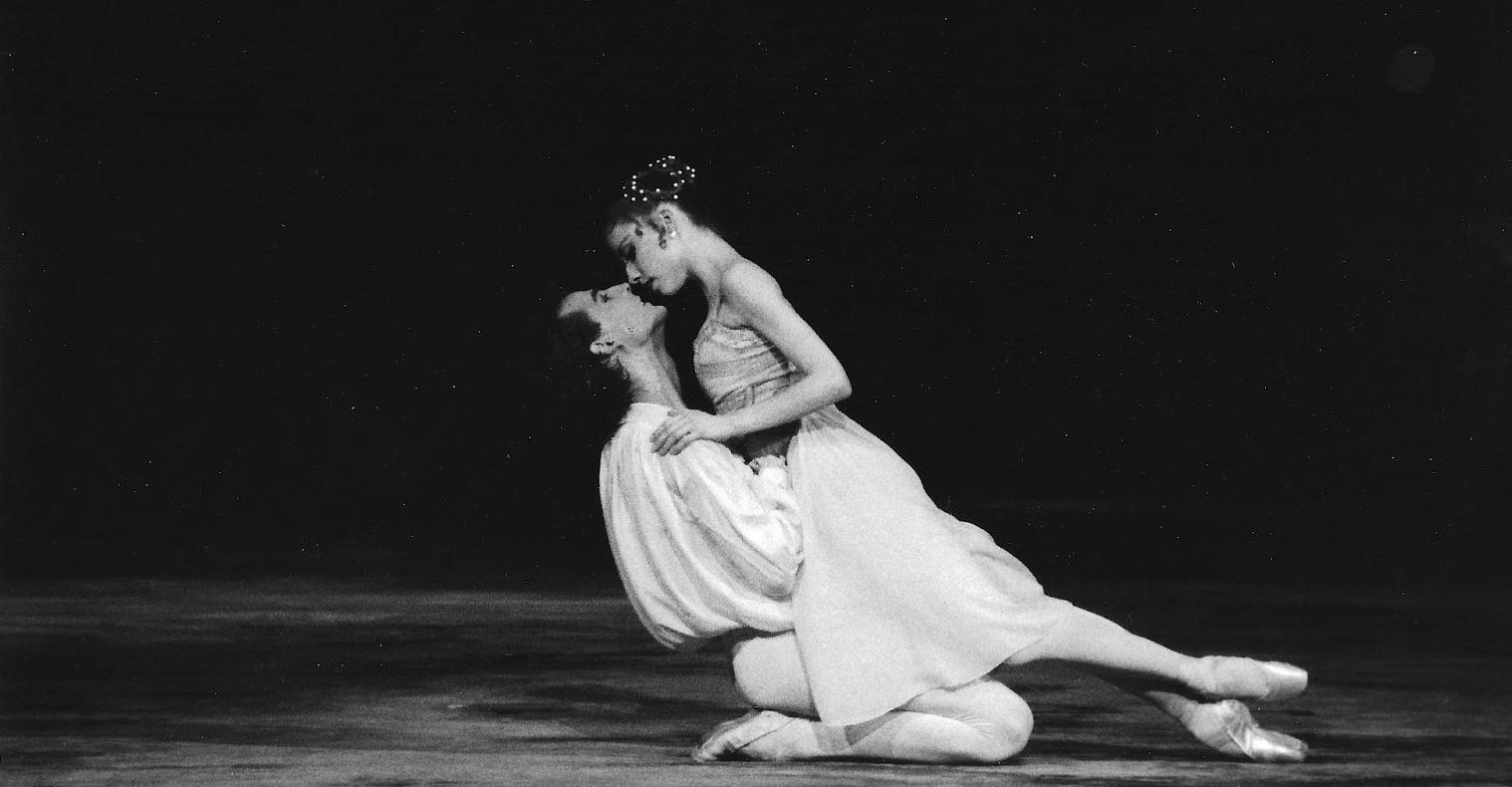 Above: In rehearsal with ABT II. Photo: Patrick Jackson; Don Quixote. Photo: MIRA, courtesy of Wes Chapman.
Above: In rehearsal with ABT II. Photo: Patrick Jackson; Don Quixote. Photo: MIRA, courtesy of Wes Chapman.
It’s hard to meet anyone in the Shoals area who doesn’t know Mary Settle Cooney.
It’s even harder still to find someone who hasn’t supported the Tennessee Valley Art Association simply because she asked –and mostly because they love her.
Diminutive in stature and gentle in demeanor, Mary Settle’s presence looms large in the state of Alabama. A powerful advocate for the arts, Mary Settle grew the TVAA in Tuscumbia, Alabama, from a fledgling organization in the 1980s to a multi-faceted, vibrant Art Association in the Shoals area that has inspired arts programming and museums across the state.
Though Mary Settle retired as Executive Director of the TVAA in 2019 after almost 40 years of dedicated service, her influence continues to be a critical component of the Association’s ongoing identity.
“Mary Settle Cooney is an inspiration to me by her example of leadership and service to the art association locally and across the state,” said Andy Mann, president of Progress Bank in Florence and a former TVAA board member. “She is one of those special people that comes across our path in life that is a real difference-maker. This is evidenced by the growth and success of the art association under her leadership for more than 30 years.”
Standing in the Mary Settle Cooney Education Gallery of the Tennessee Valley Museum of Art, Mary Settle recalls decades of memories with an overwhelming sense of gratitude.
It was the summer of 1980 when Mary Settle, a 38-year-old wife and stay-at-home mom, accepted a position with the young Association. Board member Betty Dardess told her they needed a volunteer for a new exhibit at the art center.
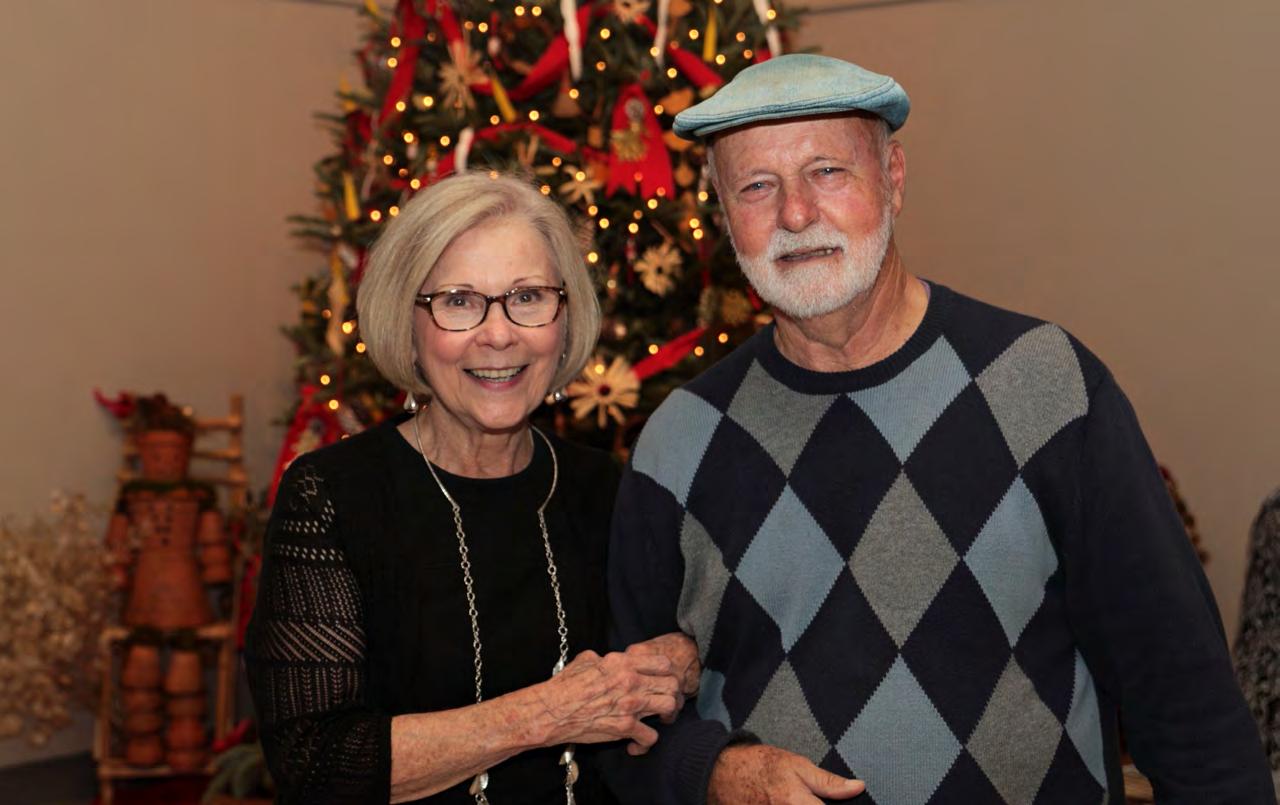
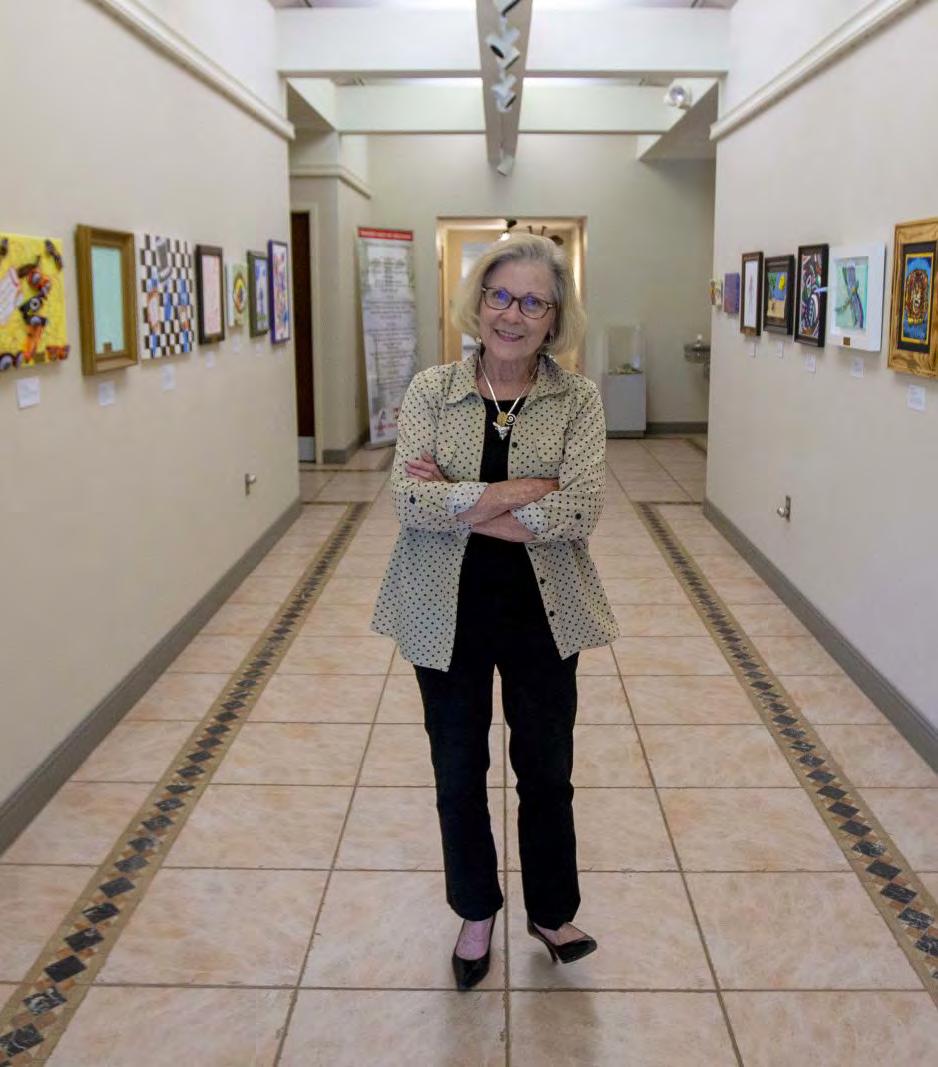
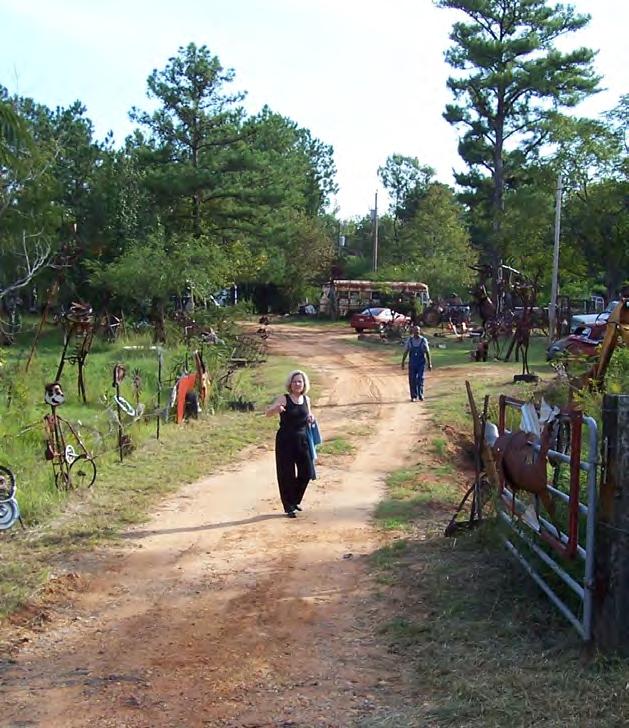
Out of curiosity, Mary Settle showed up. On that day, her legacy began.
Her first task was to assist with an exhibit funded by the National Endowment for the Arts at the Art Center in downtown Tuscumbia. By the end of the summer, Mary Settle had found her calling. She was hired as Assistant Director under thenDirector Shirley Mays that fall.
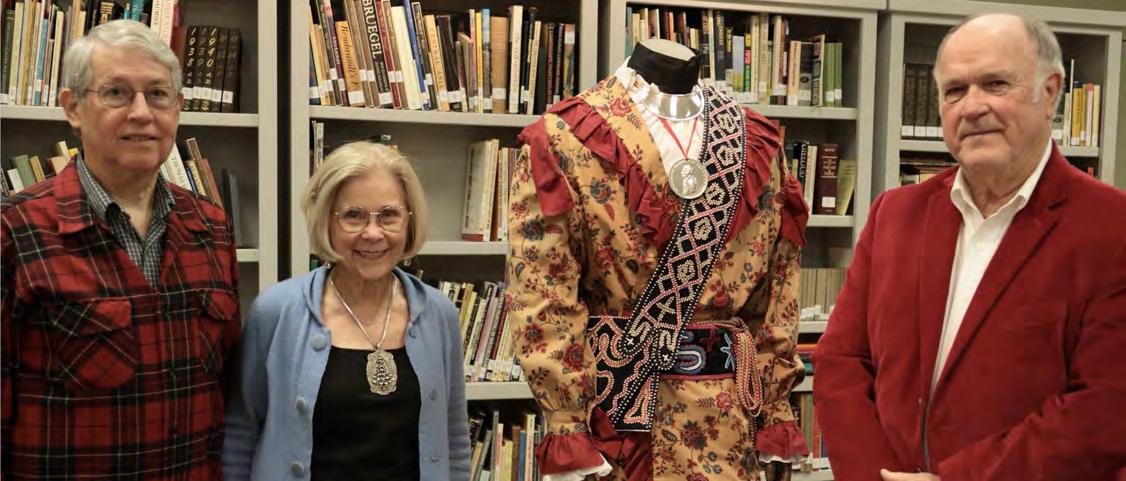
Over the next eight years, Mary Settle was involved with all aspects of the organization’s programs, including the Tennessee Valley String School and Boy Choir, Suzuki School of Music, Community Orchestra, the annual Helen Keller Festival Fine Art and Craft Show, juried art competitions, and annual fine arts exhibitions. She also helped create Center Stage, now a beloved community theatre arts program. And she loved every minute of it.
“Mark Twain said, ‘Find a job you enjoy
doing, and you’ll never work another day in your life,’” Mary Settle said. “I can’t remember a day that I did not enjoy going to ‘work.’ It truly was so much fun, every single day. It never felt like work.”
And, of course, it wasn’t. For Mary Settle, it was a passion, a calling – what she was created to do.
As the community arts programs grew, Mary Settle grew with it, quickly realizing she had a powerful opportunity to impact her community. An Auburn graduate with a degree in Elementary Education, Mary Settle knew that art was powerful – and necessary – in elementary curricula. After noticing that local schools in both Colbert and Lauderdale counties were not able to offer art classes to elementary students, she created a free arts outreach program for fourth-grade classes in both counties. The program continued for years until all schools had employed certified arts teachers.
Above: Douglas Rodgers, Mary Settle Cooney, and former State Representative Johnny Mack Morrow pose with a special project at the Museum, an interpretation of the Chief George Colbert shoulder bag. Rodgers, a deep student of Southeastern native beadwork, replicated the original strap that once belonged to Chief Colbert. Photo: Mary Carton.“The educational programming is truly a passion of mine,” she says. “Out of all the work I have done here, I think the educational programming is what is so special to me. It makes such a difference and enriches the lives and opportunities of children in so many ways.
Nelson Mandela said, ‘Education is the most powerful weapon which you can use to change the world.’ That is so true. Early on, I came to understand how important the arts are in the lives of every adult and every child. I believe we must empower all children to understand who they are and what special gifts they each have.”
As the community programs escalated throughout the 1980s, the visual arts exhibitions, performing art rehearsals, and performances were all conducted at the
Art Center. The facility was constructed in Tuscumbia in 1974 on the city’s Commons and offered two small multi-purpose spaces, one art gallery, and two offices. After hosting plays and what became the Shoals Symphony on the floor of the Art Center for years, it became clear that the growth of the music and theatre programs had exceeded the capacity of the space.
In 1983, the Association purchased the historic Ritz Theatre in neighboring downtown Sheffield.

A dormant former silent movie house, the Ritz had originally opened in 1928 and boasted beautiful architecture with a stunning theatre front. Mary Settle was assigned to coordinate the restoration and expansion, which she did with enthusiasm.
In 1986, the freshly restored historic theatre opened as a performing arts
facility for the Art Association and other community programs and is still a vibrant component of the TVAA and downtown Sheffield today. Under her leadership, it expanded over the years to include an orchestra pit, extended lobby, kitchen, scene shop, and a black-box type performance space and stage.
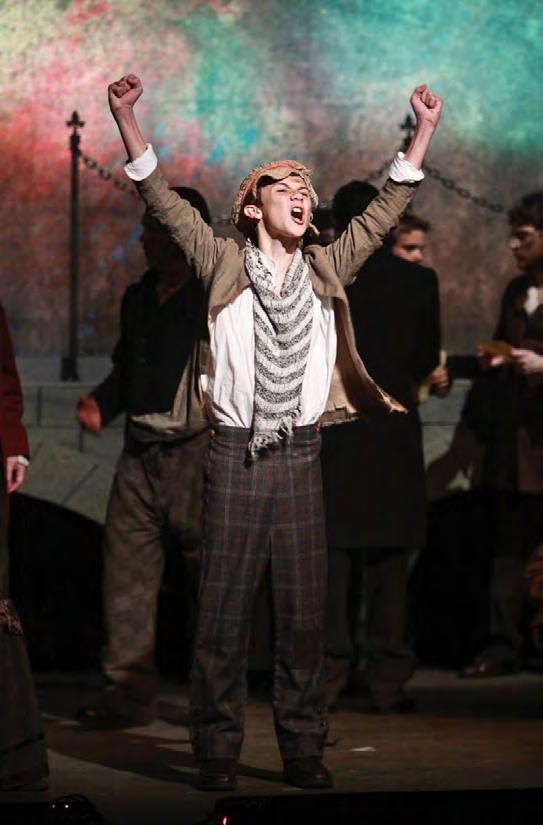
In 1989, after almost a decade with the Art Association, Mary Settle was named the Executive Director. Under her leadership, programming at both the Ritz and the Museum expanded exponentially, along with community support of the Association. In 1998, she guided the expansion of the Museum facility, more than doubling its space. The expansion included adding two additional galleries, climate-controlled art storage for the permanent collection, a set shop, additional office space, and the permanent exhibit of Colbert County’s prehistoric Martin Petroglyphs, on permanent loan from the University of Alabama Museums. Her passionate and visionary support of the arts led to creative and innovative exhibits, theatre productions, musical performances, and educational programming for school children. She hosted countless field trips
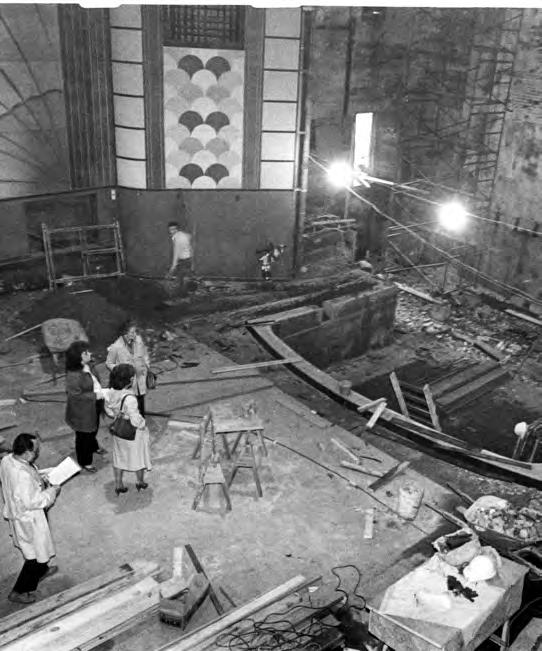 Left: Mary Settle and board member John Troy look on as the Ritz undergoes renovations in February 1985. Photo: Jim Hannon/Times Daily, courtesy of TVAA; the SummerStock production of Les Misérables at the Ritz in 2013. Photo: Betty Walker.
Left: Mary Settle and board member John Troy look on as the Ritz undergoes renovations in February 1985. Photo: Jim Hannon/Times Daily, courtesy of TVAA; the SummerStock production of Les Misérables at the Ritz in 2013. Photo: Betty Walker.
"...to see the transformative power of the arts – there is simply nothing like it."
during which children from several states traveled to the art museum to create, view, explore, and discover their own talents.
Mary Settle Cooney was part of it all each day, often arriving at 5 am and working long past midnight, scrubbing floors and cleaning bathrooms, cooking and serving refreshments, setting up chairs and exhibits, curating art shows, painting walls, meeting with artists, writing countless grants, crafting budgets, securing sponsors, handwriting letters to members, and dining with potential donors. No job was too big or too small for Mary Settle; she recognized the value of every single act, and she was grateful for the opportunity to serve.
Realizing the need for long-term financial support for the Association, Mary Settle became the Incorporator of the Tennessee Valley Foundation for Endowment in
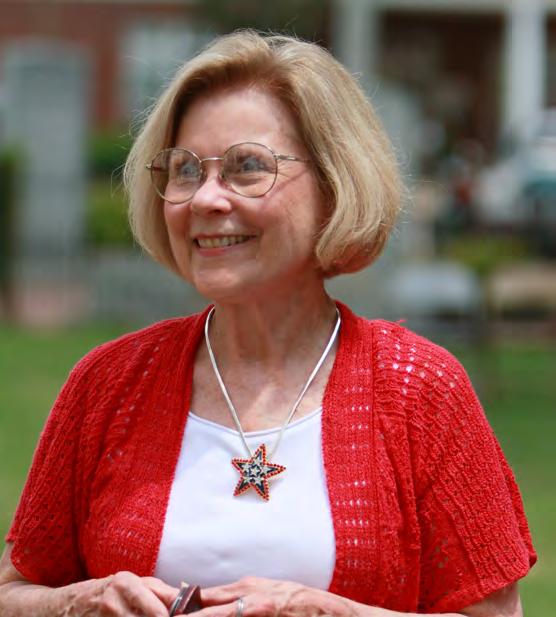
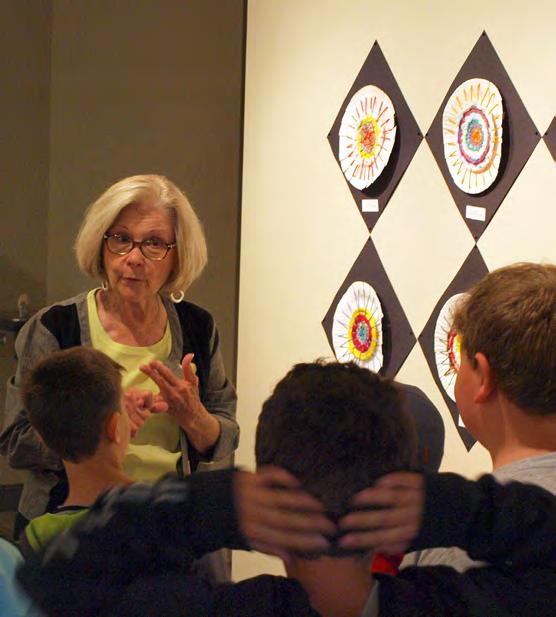
2009. A separate 501(c)3 organization, the Foundation invests and raises funds to support Association programs and facilities. It now boasts a record $1.5 million.
While the Foundation has a board that actively fundraises and invests, no one has raised more money for the Association over the years than Mary Settle, simply because no one can tell her no.
“It really never occurred to me that people wouldn’t find this valuable and want to contribute at whatever level they could,” she said.
Pat Shoemaker, widow of the late Tuscumbia mayor Bill Shoemaker, laughs as she recalls her husband saying nobody’s wallet was safe when Mary Settle entered the room. “No one could resist her request to support the arts,” she said.
Mann, who now serves as Finance Chair for the TVAA Foundation, credits Mary Settle Cooney’s fiscal responsibility with the organization’s success, particularly during the Covid-19 pandemic. For many years, Mary Settle told the TVAA board that the organization must keep enough in reserve to operate for at least one year with no income if the unthinkable happened. Because of her conservative fiscal leadership, the organization had reserves to rely on that enabled it to remain open and vibrant despite a worldwide shutdown.
“She made the TVAA what it is today and established funding to position the organization for success for years to come,” Mann said. “If not for Mary Settle’s fiscal responsibility, the TVAA would not have been able to withstand the pandemic. She made a difference, and her influence continues to have a positive impact on the TVAA.”
Over the years, the TVAA has flourished, impacting the Shoals community in a
myriad of ways because of one woman’s vision, passion, and unwavering advocacy. Her leadership has inspired generations of artists, musicians, actors, and community volunteers who credit Mary Settle with their opportunity and success.
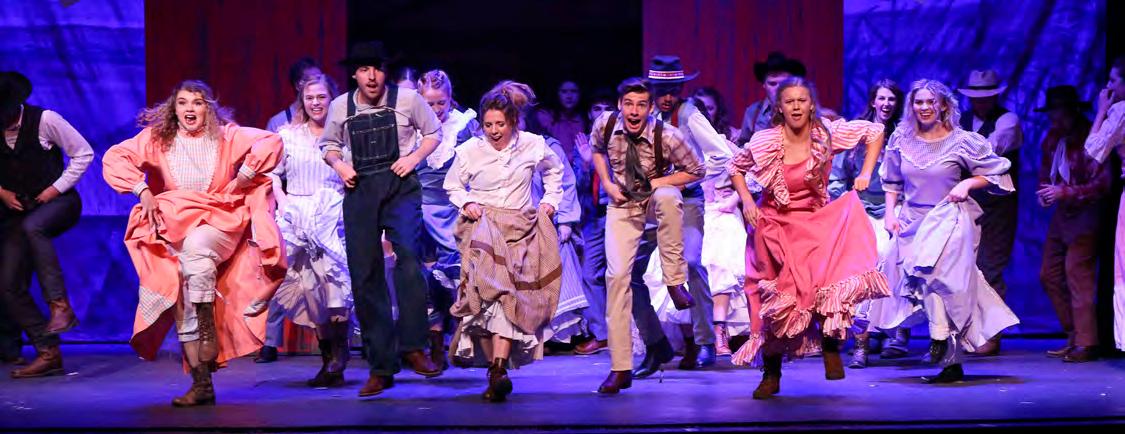
And yet Mary Settle remains humbly grateful. Now retired with her husband, Dr. Joe Cooney, enjoying – at last – time to visit grandchildren, she remains dedicated to the Association. She left her heart there.
“I miss how stimulating it was to work in an environment like that,” she says. “The interesting people, the creativity, the talent, the tremendous investment in the community. It was truly a wonderful life there. I believe in the arts and the impact they can have on our lives. The opportunity to help people find their creativity, their voice, and their talent – to see the transformative power of the arts – there is simply nothing like it.” ◆
Above: Oklahoma! at the Ritz in 2018. Photo: Betty Walker. Opposite page, clockwise from top left: Photo: Matt McKean, Times Daily; Iron Horse performs at the Jake Landers Bluegrass Festival in 2018, photo: Mary Carton; Mary Settle prepares for the annual "Trees of Christmas" exhibit at the Museum, photo: Mary Carton; SummerStock at the Ritz, photo: Betty Walker; Susie Holt, Mary Settle, and former Florence mayor Steve Holt attend an event in 2019, photo: Mary Carton; the "Martin Petroglyph" exhibit, photo: Mary Carton.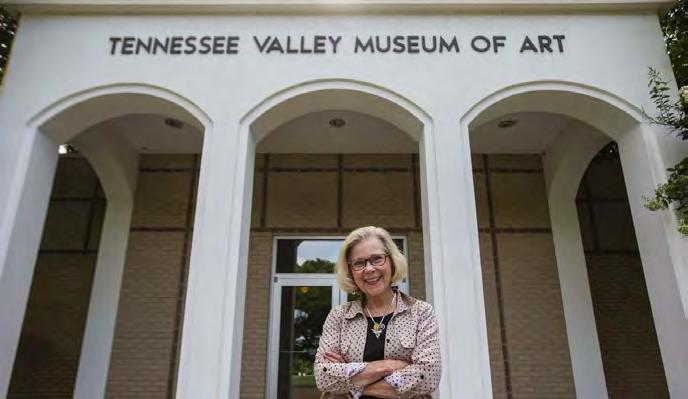
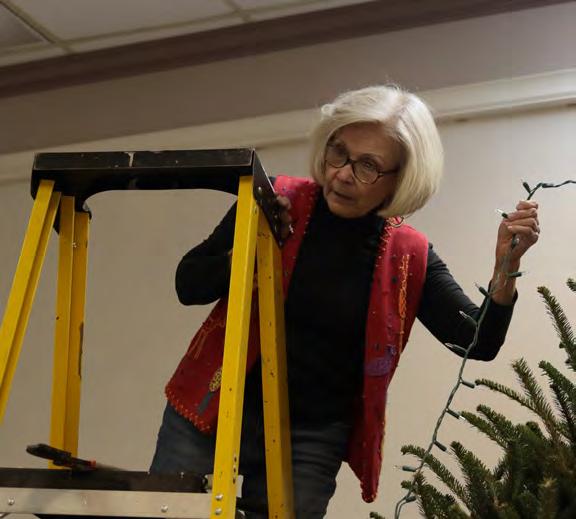
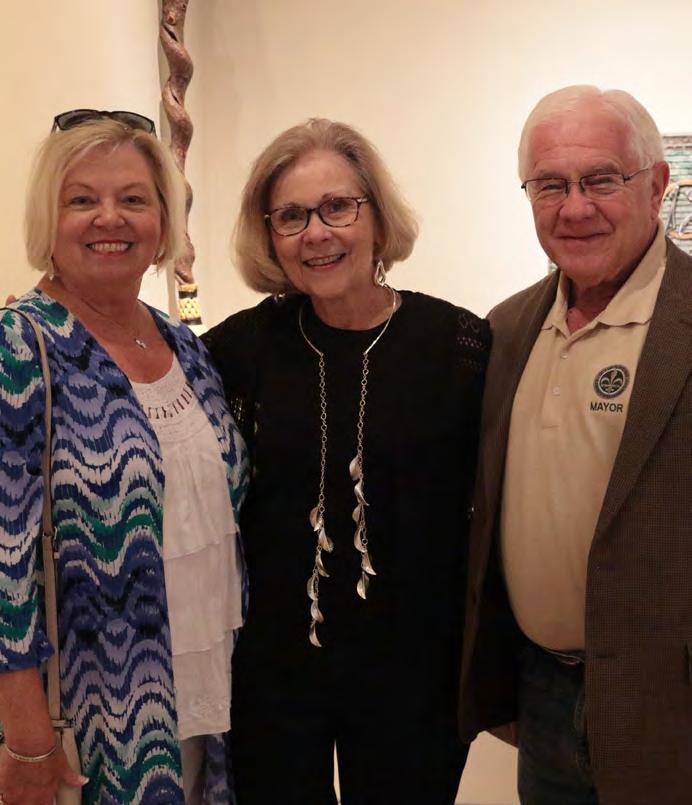
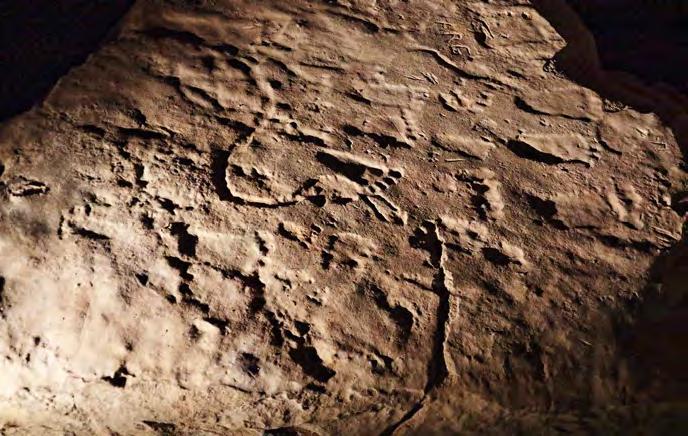
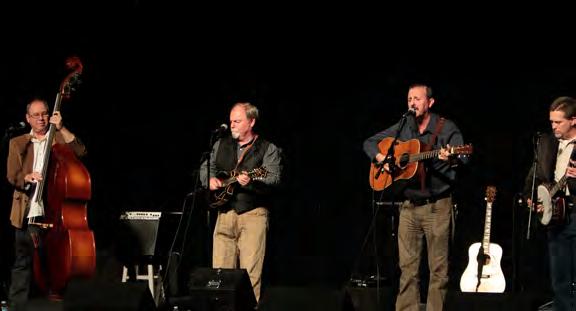
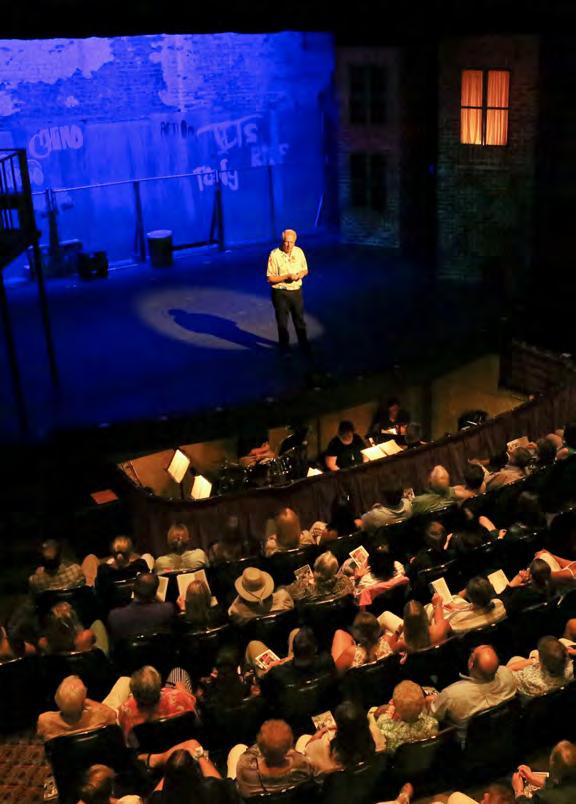
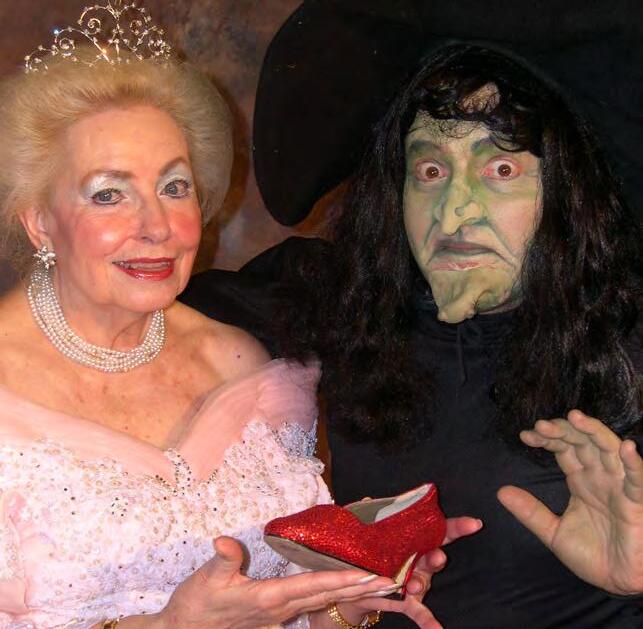
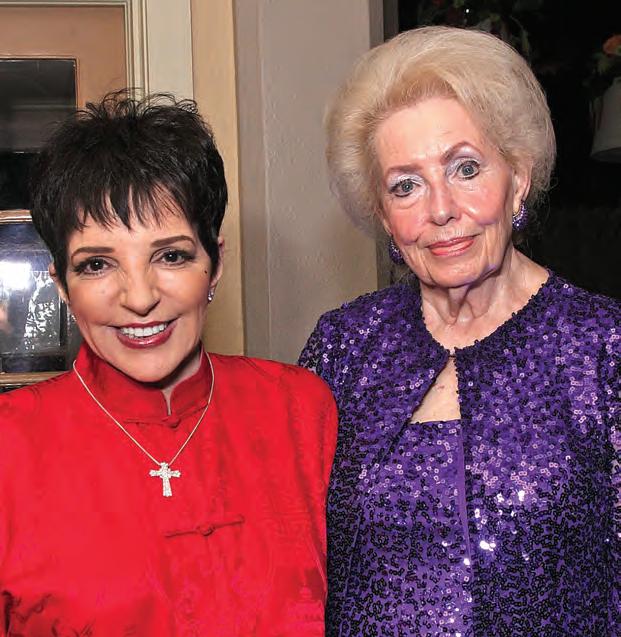
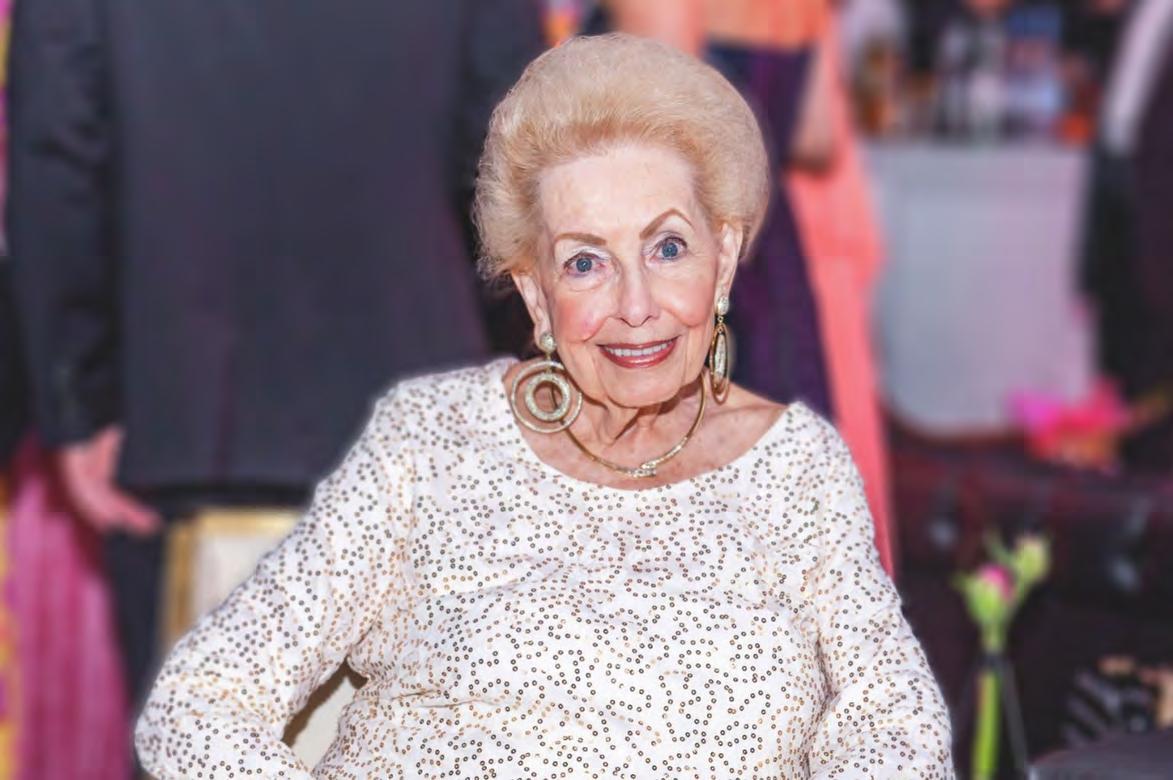
From his lofty perch 1,025 feet atop Red Mountain, the statue of Vulcan, the Roman god of the forge, has been keeping a watchful eye on Birmingham since 1936. Among the most startling changes he has witnessed in the Magic City over those years has been the development of a vibrant arts community consisting of
professional theatre groups and several world-class venues for the performing arts. While Birmingham will forever be indebted to the many individuals who played key roles in the development of that arts community, few have made a more lasting and widespread contribution than Patricia “Patty” McDonald.
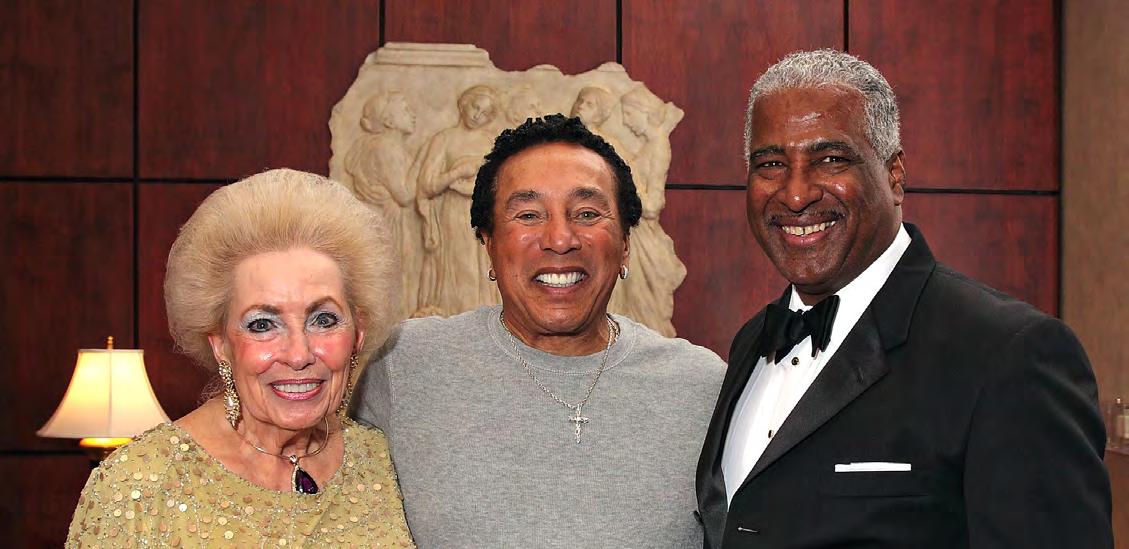 Patty McDonald, Smokey Robinson, and former Birmingham mayor William A. Bell at the Viva Health Starlight Gala in 2010. Courtesy of UAB’s Alys Stephens Center.
Patty McDonald, Smokey Robinson, and former Birmingham mayor William A. Bell at the Viva Health Starlight Gala in 2010. Courtesy of UAB’s Alys Stephens Center.
A
Distinguished Service Award from UAB’s Alys Stephens Performing Arts Center
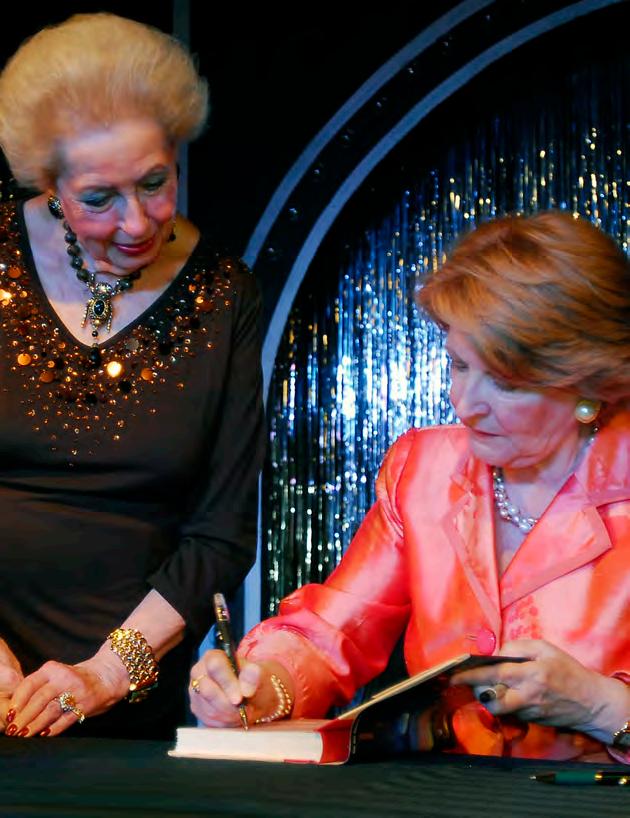
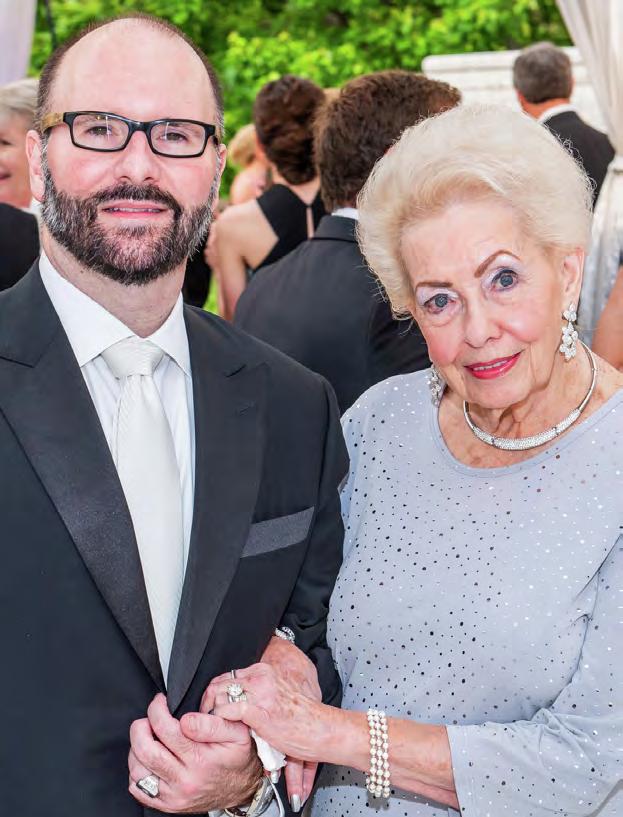
Outstanding Service to the Community Award from the Birmingham Area Theatre Alliance
Albert B. Head Legacy Award from the Alabama State Council on the Arts
The recurring theme in the numerous tributes to Patty McDonald is in the void that now exists with her passing.
Above, L to R: Jeffrey Klinner and Patty McDonald at the 2018 Museum Ball, courtesy of Birmingham Museum of Art; Patty looks on as Fannie Flagg signs her book before a performance at the Virginia Samford Theatre, 2010. Photo: Jeff Roberts, Birmingham News. Alabama Media Group. All rights reserved. Reprinted with permission. glimpse at some of the awards and accolades bestowed on Patty by a grateful community is a stunning testament to the impact she had for enriching the lives of others through theatre and the arts:Patty excelled in numerous fields. Success in any one of them would have been adequate to claim “star” status: performer, sponsor, mentor, and tireless advocate for the role that theatre, music, and dance play in enriching our lives. In addition, her unwavering philanthropic support significantly impacted the multitude of causes she championed.
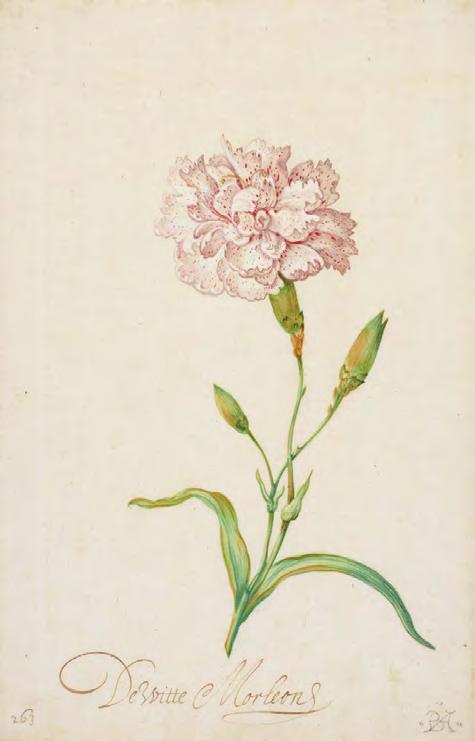
Born in Denver, Colorado, Patty attended Colorado State University and graduated from the University of Denver. She and her husband, Pat, a veteran of the U.S. Navy, settled in Birmingham in 1975 after Pat’s 26-year naval career ended.
Patty quickly immersed herself in the Magic City’s arts community, both as a gifted performer and as an avid supporter. She began attending classes at Samford University and connected with Samford’s School of the Arts. Her keen interest in the University’s arts programs led to her serving on the Advisory Board and playing a significant role in initiating sponsorships of events in the School of the Arts.
“Patty was both a friend and counselor to the School of the Arts,” stated Joe Hopkins, Dean of Samford’s School of the Arts, when learning of Patty’s passing in 2021. “We will miss her wisdom and leadership.”
Patty’s impressive stage presence led her to be selected for a number of memorable thespian roles. She played “Melissa” in Virginia Samford Theatre’s Love Letters and she sparkled as “Glinda the Good Witch” in The Wizard of Oz at Red Mountain Theatre.
Particularly dear to Patty was Patty’s Piano Bar. In the cabaret-style fundraiser event for the Virginia Samford Theatre, Patty’s cast dropped by her piano bar for a night of songs. The cast included some of the city’s favorite performers, including Kristi Tingle Higginbotham, Tam DeBolt, Celeste Burnum, Bill Bugg, Carl Dean, Boots Carroll, Jack Mann, and Jan D. Hunter. “She was a natural performer,” Hunter recalled.
Patty has been lauded for her many attributes, not least of which was her philanthropy. “My hard and fast rule,” she once stated, “is that I cannot and will not do anything that will not benefit a number of people.”
Strict adherence to that rule led to Patty’s name frequently appearing on the list of sponsors of various local theatre productions and among the board members of a myriad of organizations. She served on the advisory boards of UAB’s Alys Stephens Performing Arts Center; the Alabama Ballet; Opera Birmingham; Red Mountain Theatre; Virginia Samford Theatre; Birmingham Music Club; Samford University Arts Executive Council; VSA Arts of Alabama; Oasis Counseling for Women and Children; and Steel City Men's Chorus. She also served as Honorary Chair for Birmingham AIDS Outreach Arty Party.
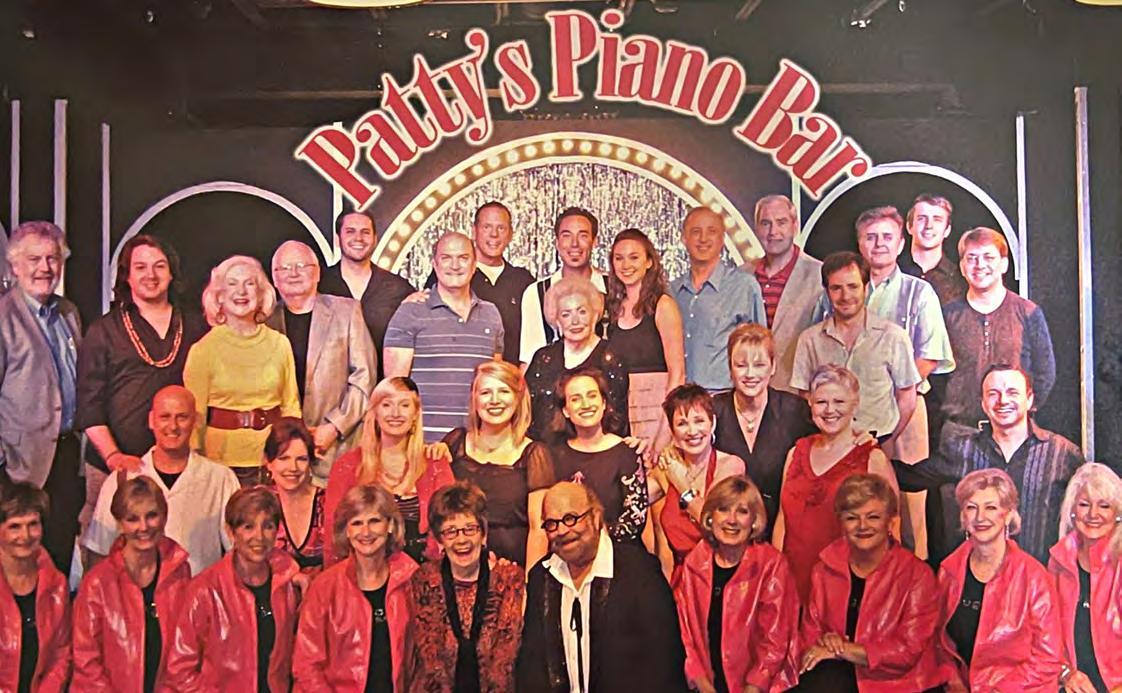
“I would be hard-pressed to think of an arts board she did not sit on at one point or another,” stated Keith Cromwell, Executive Director of Red Mountain Theatre.
Lili Anderson, Executive Director, UAB Arts, met Patty many years ago when the former worked at the Birmingham Museum of Art. “Patty was truly an arts encourager for the entire Birmingham community,” Anderson explained. “She would not hesitate to pick up the phone to offer words of reassurance for the UAB Arts staff and me, or pen long, handwritten letters letting us know the work we were doing was important. Those calls and letters were especially appreciated and essential during the pandemic over the past two years.”
Patty’s support of arts education helped establish several scholarships in the belief that a strong commitment to education through the arts provided opportunities for youth. Her passion for instilling an appreciation of the arts in young people is
Patty McDonald with the cast and crew of Patty’s Piano Bar at Virginia Samford Theatre, 2010. Courtesy of Jan D. Hunter.perhaps nowhere better exemplified than in a letter Patty wrote to Allen Montgomery – who at the time was serving as Chair of the Advisory Board of UAB’s Visual and Performing Arts, which includes the Alys Stephens Performing Arts Center.
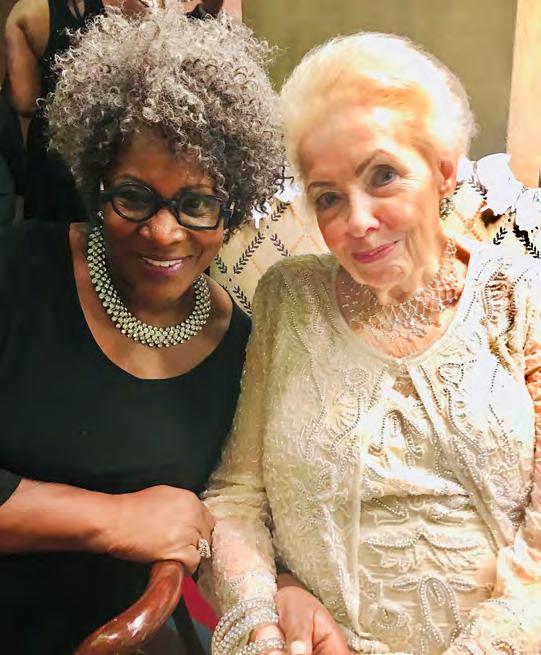
“The arts are fundamental to our humanity,” she wrote. “They bring us joy, help express our values, and build bridges between cultures. For the arts to remain a significant part of our society we must pass along our passion for the arts to the younger generation. We must encourage children to embrace the arts that give them the resources they need to succeed in life.”
Patty practiced what she preached. Kelly Allison, Chair of the UAB Department of Theatre, reminisced about meeting Patty in 1998 during his first year at UAB. “Patty and her husband, Pat, helped the UAB Department of Theatre launch Ovation, our student support fund that helps offset the cost of tuition for students who are cast in shows and work backstage on Theatre UAB productions.”
Patty’s impact on the Alabama Symphony Orchestra (ASO) is also evident. One of Birmingham’s oldest music organizations, the ASO traces its roots back to 1921. The Symphony has provided professional, symphonic music to Alabamians for almost a century. “I started working for the ASO in 2004,” stated Mark Patrick, the ASO’s Executive Director. “Patty was already a patron and donor at the time. She sponsored many concerts and special events over the years and was the sole sponsor for our Concertmaster and Friends
chamber music series for several years. I’ll always miss seeing her at concerts, and I know all of us will miss having her as a supporter.”
Patty’s long-time friend, Cathy Rye Gilmore, the President of Virginia Samford Theatre, has similar memories. “I met Patty McDonald 20 years ago during the 2002 capital campaign to restore the former UAB Town and Gown Theatre,” Gilmore stated. “She and her husband, Pat, were not only major financial contributors to the project, but continued their enthusiastic and generous support for many years.”
"The arts are fundamental to our humanity."Gaynell Hendricks and Patty at the Birmingham Chapter of The Links, Incorporated Gala, 2017. Courtesy of Gaynell Hendricks.
Gaynell Hendricks, another of Patty’s longtime friends, underscored that point when introducing her as the recipient of UAB’s Alys Stephens Performing Arts Center Distinguished Service Award in 2018. “Our awardee has shared, supported, lifted up, endorsed, rejuvenated, sponsored, and kept alive many arts programs, artists, and art initiatives around the region,” Hendricks noted. “Not only does she support them with her dollars, she supports them with her presence. She can be seen all around town in attendance at art functions, and her presence encourages and validates artists to keep moving forward.”
“Patty was the ‘Energizer bunny’ of the arts in Birmingham,” Keith Cromwell added. “She was careful to support everything both with her philanthropy and her time. She will be deeply missed.”
Jeffrey Klinner, Patty’s long-time friend, confidant, and frequent escort at events, pointed out that Patty’s support was not to just one segment of the arts community. “She loved them all,” he noted.
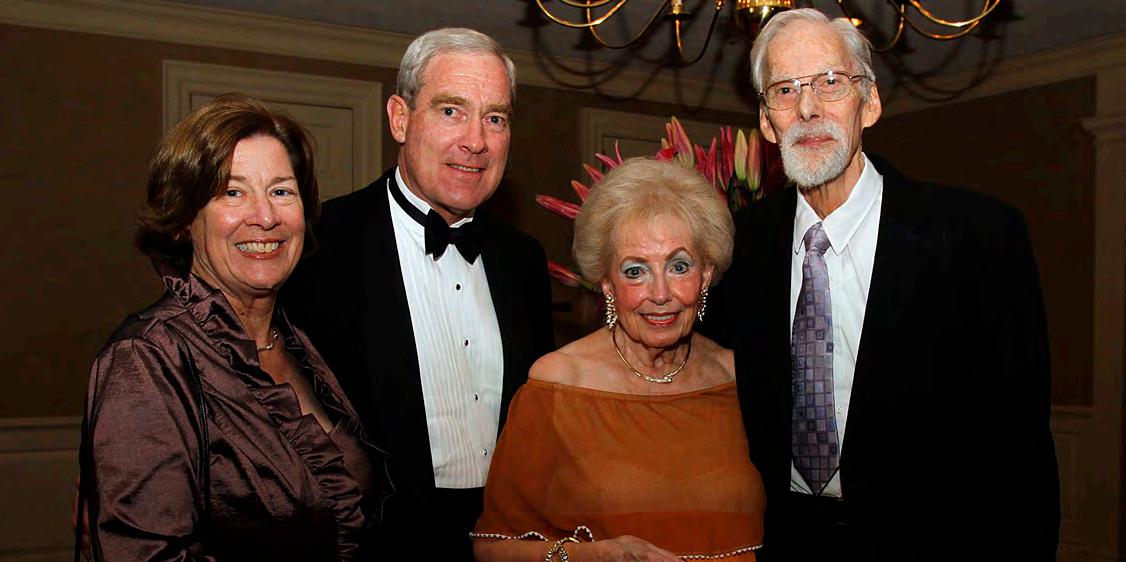
Vulcan will undoubtedly continue his watch over Birmingham and its thriving arts community for many years to come. And Patty McDonald’s legacy will forever be a part of the community that she faithfully served over the 46 years she called Birmingham her home.
“We will be celebrating her legacy for a lifetime,” noted Heath Mixon at UAB’s ArtPlay. “She just got it – LIFE! And wow, did she live it!” ◆
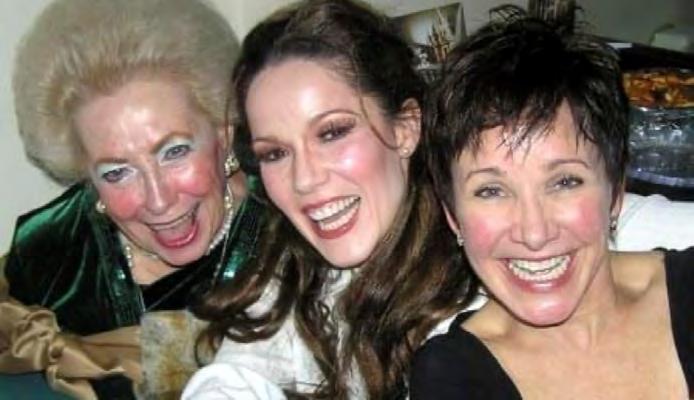
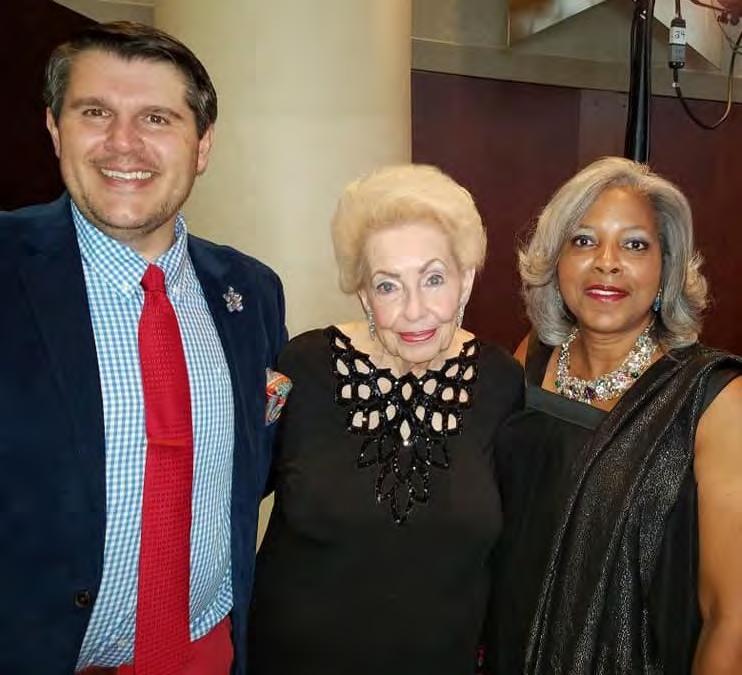
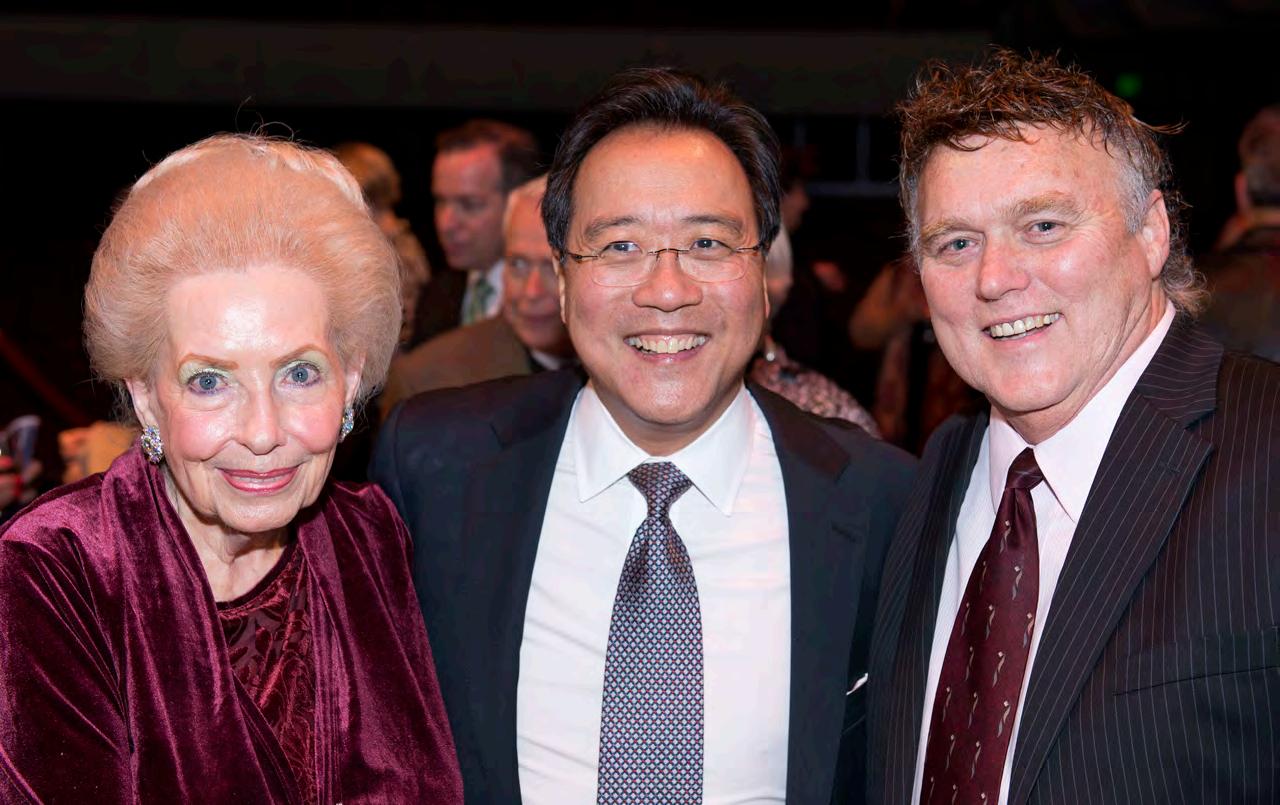
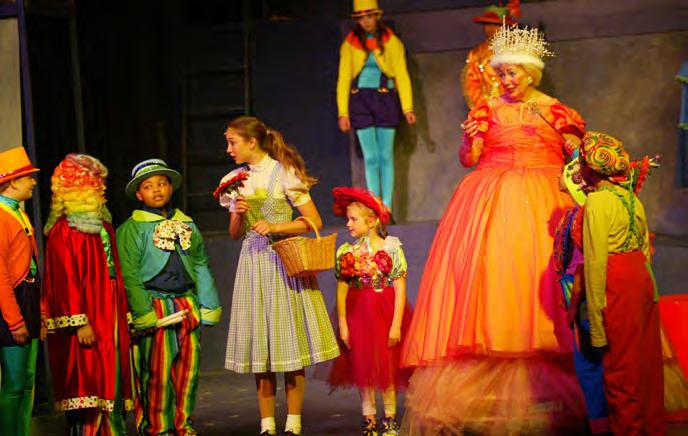
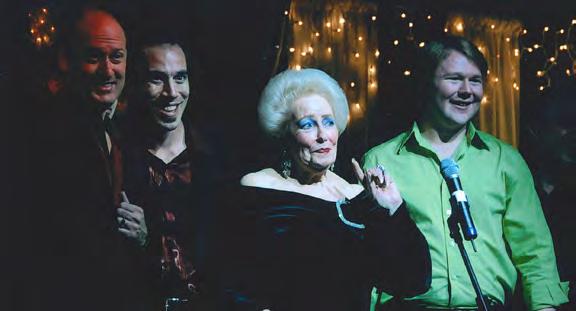

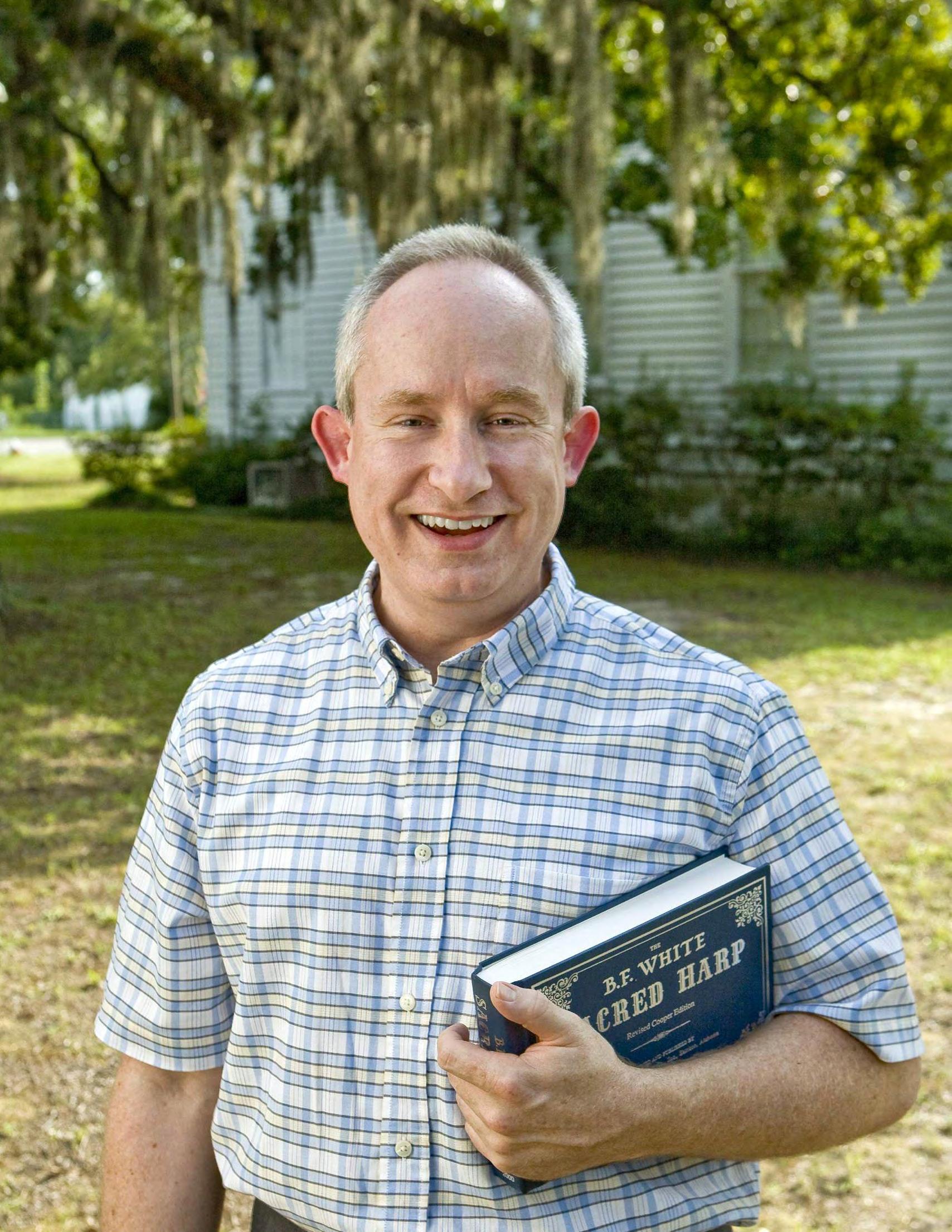 Above: Stanley Smith in 2007, photographed by Mark Gooch for Carry On: Celebrating Twenty Years of the Folk Arts Apprenticeship Program Opposite page: Stanley leads a song at the Capitol City Shape Note Singing in 1993.
Photo: Anne Kimzey, Alabama Center for Traditional Culture.
Above: Stanley Smith in 2007, photographed by Mark Gooch for Carry On: Celebrating Twenty Years of the Folk Arts Apprenticeship Program Opposite page: Stanley leads a song at the Capitol City Shape Note Singing in 1993.
Photo: Anne Kimzey, Alabama Center for Traditional Culture.
Stanley Smith has been immersed in Sacred Harp singing since childhood. He first heard the music on visits to his grandfather’s farm near Ozark, in Alabama’s Wiregrass. There was a church nearby, and “when the wind blew right, you could hear the singing and they were almost a mile away,” he told a Montgomery Advertiser reporter in 1992. The robust singing and blending of harmonies captivated the boy. When he was 12, he joined the singing himself. In the summer of 1973, his father took him to a singing school where he learned to “sing the notes and keep time. After that, I started bumming rides with the singers, and I’ve been going ever since.”
Sacred Harp is one of the most deep-rooted forms of traditional music in Alabama. A type of unaccompanied singing in which the musical notation employs note heads in four distinct shapes to aid in sightreading, Sacred Harp is not the province
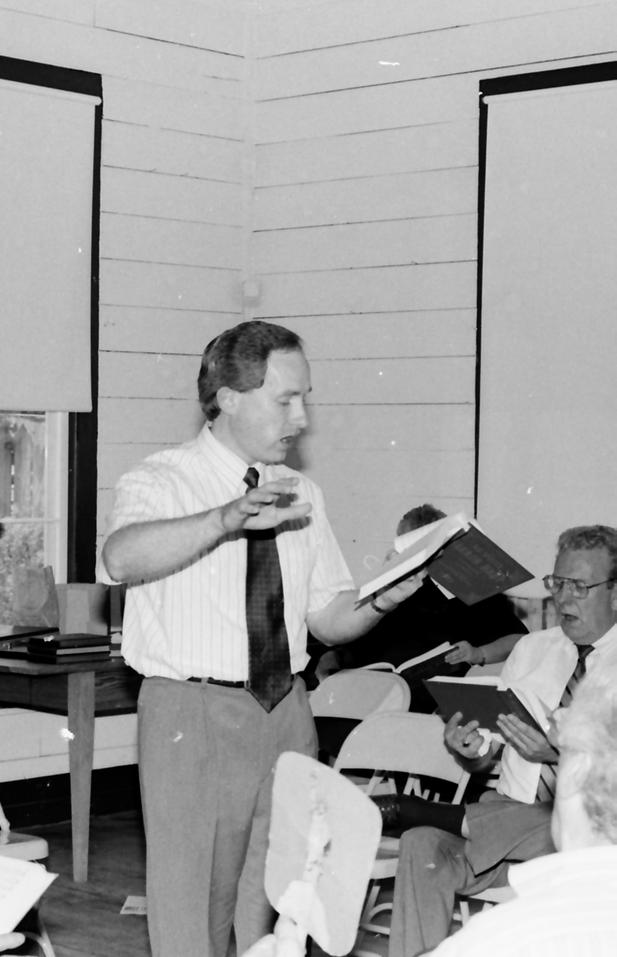
of any particular denomination and is not usually a part of regular church services. “Singings” are day-long events where the music is sung, one song after another, with a break for lunch. Each song is led by a member of the group, with the pitch set by a singer who “keys” the song for the rest. Many people learn the basics of the tradition by attending singing schools. Others simply attend singings as often as they can. Stanley did both.
As an adult, Stanley continued singing and began composing songs in the tradition. He took an active role in organizing singings. He began teaching singing schools, first in the Ozark area and then around the region. Over time, he taught groups as far away as Illinois, Massachusetts, Texas, and California. He also taught closer to
home as a master artist in the Folk Arts Apprenticeship Program of the Alabama State Council on the Arts.
Singers in the Wiregrass region primarily use B.F. White’s Sacred Harp, a collection of songs also known as the Cooper book. Periodic revisions add new songs to the book to allow for growth within the tradition. Stanley served on both the 1992 and 2006 revision committees. It was his work on the committee in 1992 that would make a bit of history.
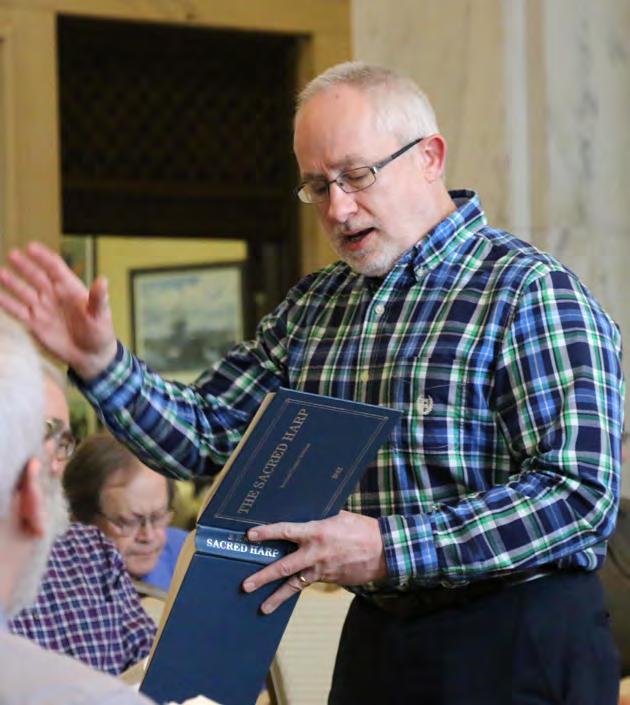
For many years, there were both white and African American singings in the Wiregrass region and Stanley grew up attending both. Dewey Williams, a leader in the African American Sacred Harp community and recipient of a 1983 National Heritage
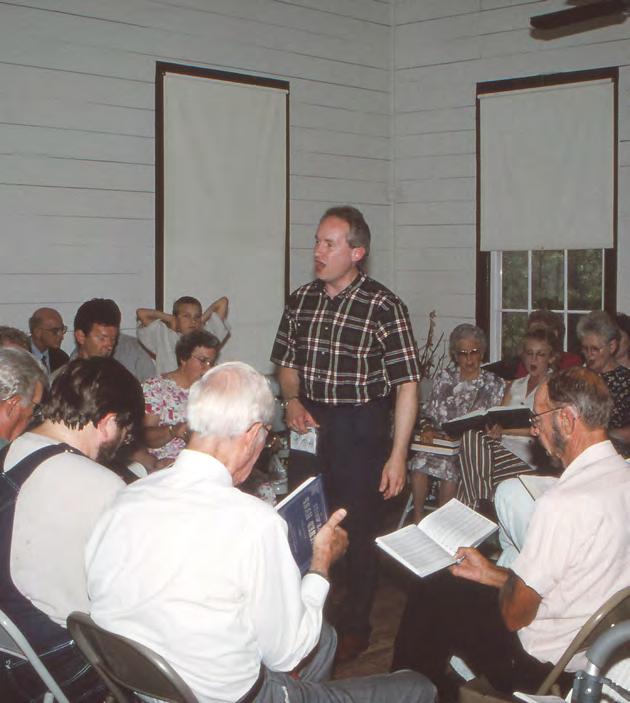 Above, L to R: Stanley at the Annual Capitol Rotunda Shape Note Singing at the Alabama State Department of Archives and History. Photo: Robert Chambless, courtesy of the Sacred Harp Publishing Co. Museum; Singing at Old Alabama Town, 1999. Courtesy of the Alabama Center for Traditional Culture.
Above, L to R: Stanley at the Annual Capitol Rotunda Shape Note Singing at the Alabama State Department of Archives and History. Photo: Robert Chambless, courtesy of the Sacred Harp Publishing Co. Museum; Singing at Old Alabama Town, 1999. Courtesy of the Alabama Center for Traditional Culture.
Fellowship from the National Endowment for the Arts, was an early mentor. Stanley tells of often waiting by the road, songbook in hand, when he knew that Mr. Dewey would be passing so that he could ask for help with a particular measure or phrase. Stanley has long been a link between the white and African American Sacred Harp communities. When Dewey Williams’s Wiregrass Singers had a Sunday morning television show on a Dothan station, Stanley was one of two white singers who were part of the group.
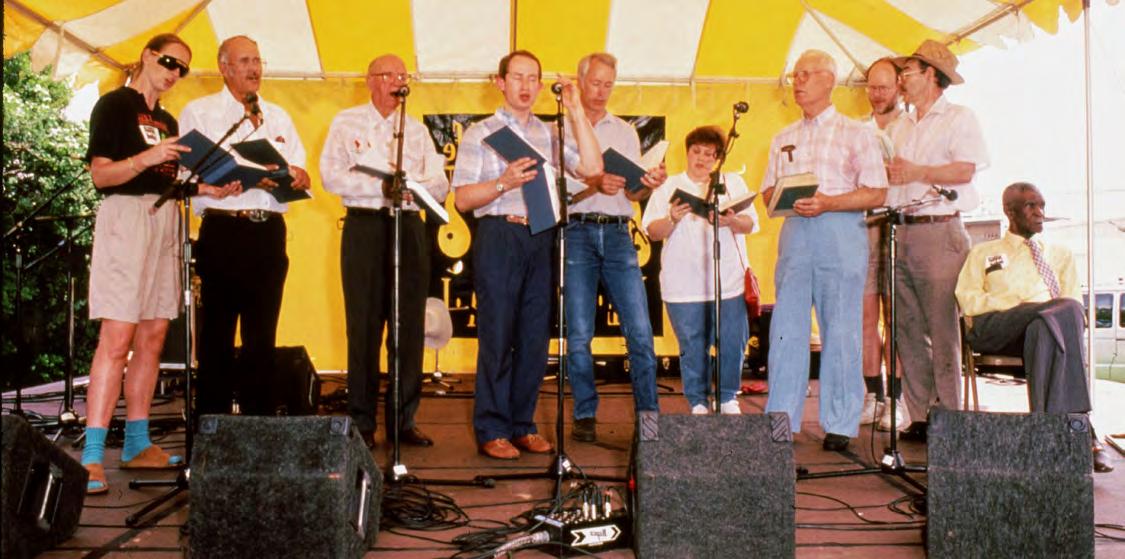
As a member of the 1992 revision committee, Stanley proposed the inclusion of “My Mother’s Gone,” a song by Judge Jackson, a leading African American singer and composer from the Wiregrass. When he went to ask Jackson’s son Japheth for his approval, Stanley learned that the elder Jackson had submitted the song for inclusion in the Cooper book 60 years earlier. It was rejected. That rejection led to the creation and 1934 publication of
The Colored Sacred Harp, a collection of songs by African American composers and an important piece of Sacred Harp history. Stanley’s successful efforts to include two of Judge Jackson’s songs in the 1992 Cooper book revision brought the story full circle.
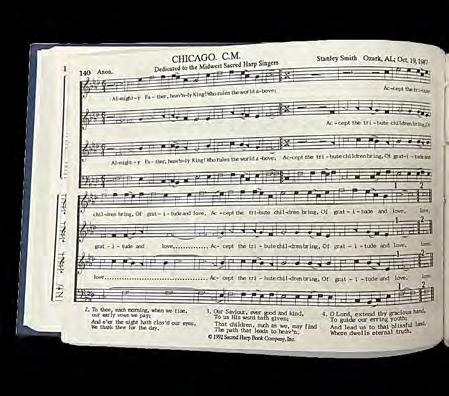
...his gracious, unassuming manner belies his influence of the community of Sacred Harp singers.Above: The Wiregrass Singers with Dewey Williams at the Alabama Folklife Festival in Montgomery, 1991, courtesy of the Alabama Center for Traditional Culture. Below: Stanley's hymn "Chicago" appears in the 2006 revision of The Sacred Harp
A prolific composer himself, Stanley often dedicates his songs to the singers he has worked with around the country. His songs
“Minnesota,” “San Diego,” and “Texas,” all included in the most recent Cooper book revision, commemorate the singers he met and worked with in those locations. “Haw Ridge” is named for the home community of W.M. Cooper, who lends his name to the Cooper book. Stanley is also past president of the Alabama State Gospel Singing Convention and has written and published a number of songs in this seven-shape “new book” genre.
Stanley Smith’s gracious, unassuming manner belies his influence on the community of Sacred Harp singers and his importance to the tradition. At singings, Stanley makes it a point to welcome and help first-time singers, many of whom go on to become regular participants. His skill as a leader and teacher of singing schools ensures that new singers will keep the tradition living and vibrant. As a composer, he writes songs that add to the repertoire while staying within the stylistic forms of Sacred Harp music. As a singer, he reflects the pride and pleasure that Sacred Harp singers take in the music and the tradition.
Most importantly, Stanley embodies some of the most important characteristics of Sacred Harp: a joy in raising one’s voice in song, a respect for the tradition while creating within it, and a generous nature that invites everyone to share in the music he loves.
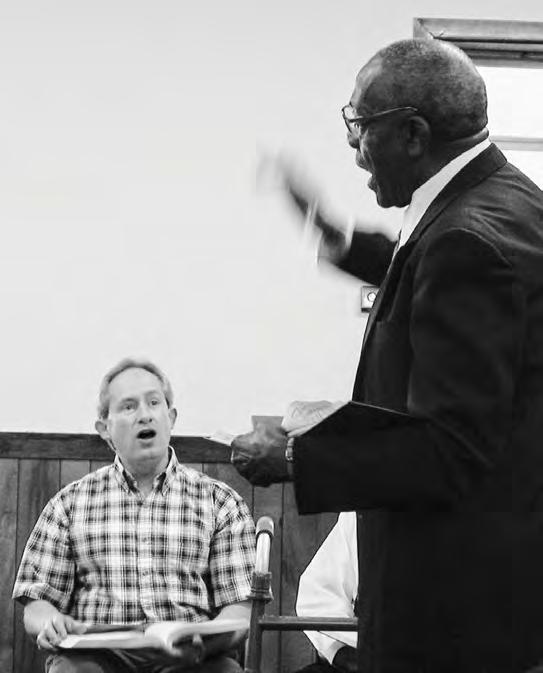
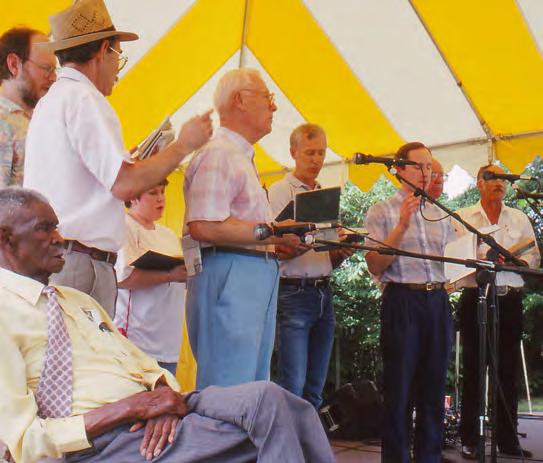 Above: Stanley and Barney Roberson at a singing. Photo: Steve Grauberger; singing at the 1991 Alabama Folklife Festival, courtesy of the Alabama Center for Traditional Culture.
Opposite page, clockwise from top left: 1993 Capital City Shape Note Singing; Stanley and Barney Roberson; the Annual Capitol Rotunda Shape Note Singing at the Alabama State Department of Archives and History; Curleen Casey Jones and Stanley; Stanley and Palmer Osborn in 2004 at the Alabama State Gospel Singing Convention. All photos courtesy of the Alabama Center for Traditional Culture.
Above: Stanley and Barney Roberson at a singing. Photo: Steve Grauberger; singing at the 1991 Alabama Folklife Festival, courtesy of the Alabama Center for Traditional Culture.
Opposite page, clockwise from top left: 1993 Capital City Shape Note Singing; Stanley and Barney Roberson; the Annual Capitol Rotunda Shape Note Singing at the Alabama State Department of Archives and History; Curleen Casey Jones and Stanley; Stanley and Palmer Osborn in 2004 at the Alabama State Gospel Singing Convention. All photos courtesy of the Alabama Center for Traditional Culture.
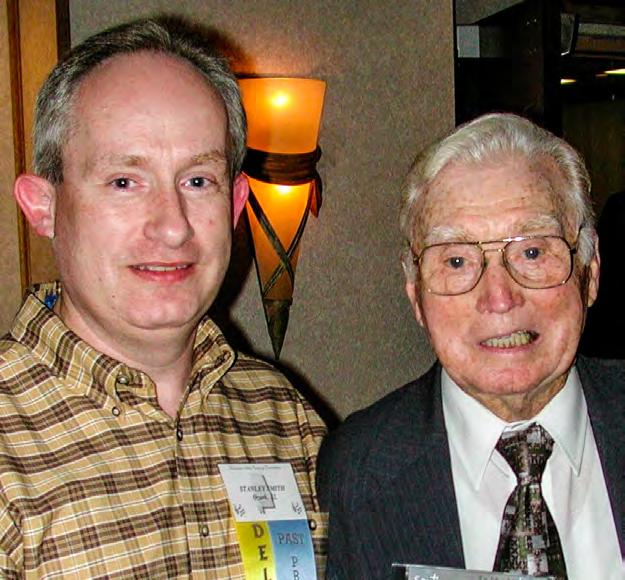
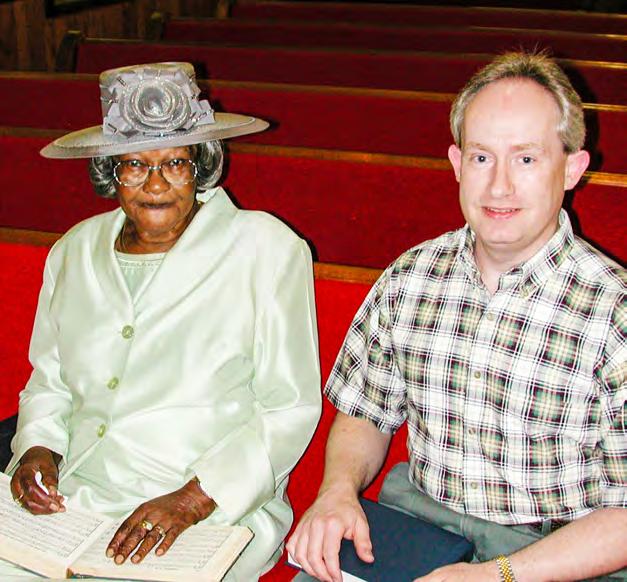
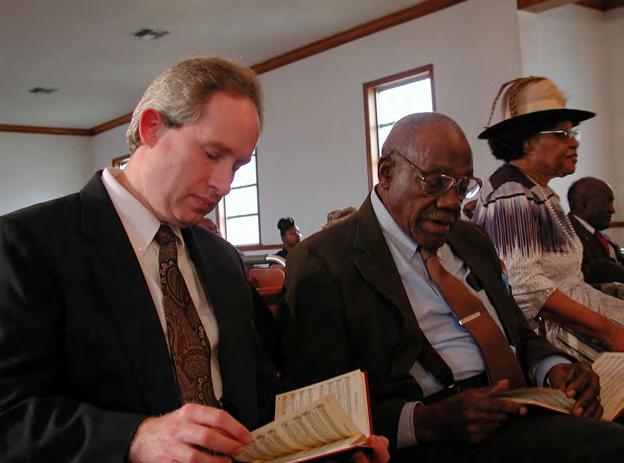
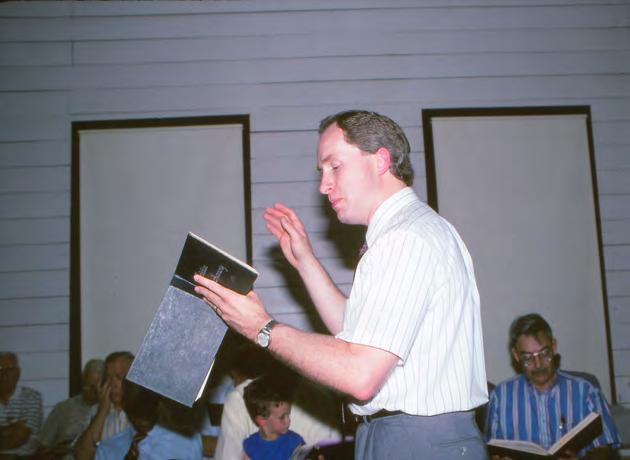
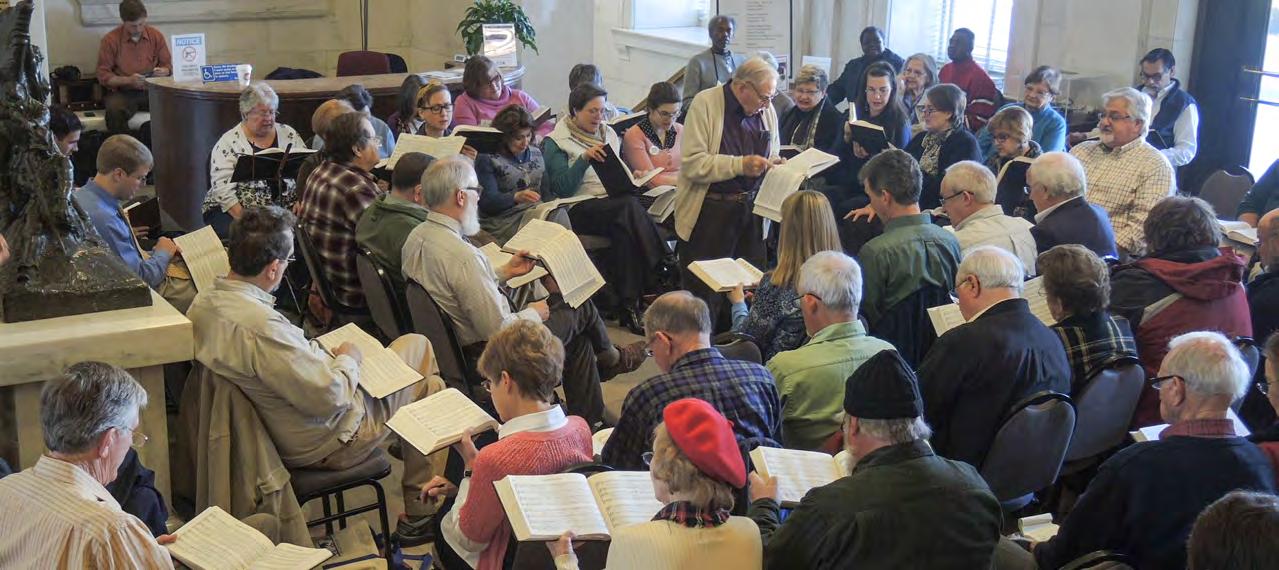
The basement walls of 3614 Jackson Highway in Sheffield, Alabama, are lined with records. They sit perched spine to spine, artwork bathed in the glow of rope lights hung from wooden rafters that shake when anyone walks through the studio upstairs where the Rolling Stones, Paul Simon, the Staples Singers, and countless others worked on career-defining music. David Hood is sitting back on an old leather couch and smiling.
“I’m still very proud of this place. I’m sitting here looking at all those records. Every time I come down here, I’ll think, ‘Gosh, I need to play that. I haven’t heard that in years.’”
If he hasn’t listened to all of his own discography lately, there’s good reason. David was a member of the famed Muscle Shoals Rhythm Section. Over the last halfcentury, he’s played some of the most
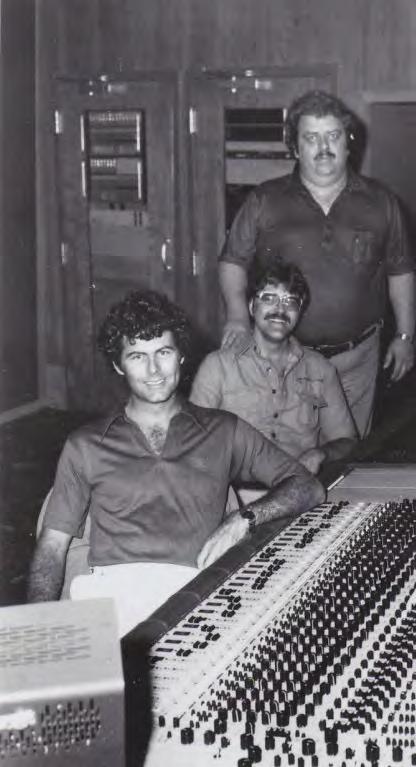
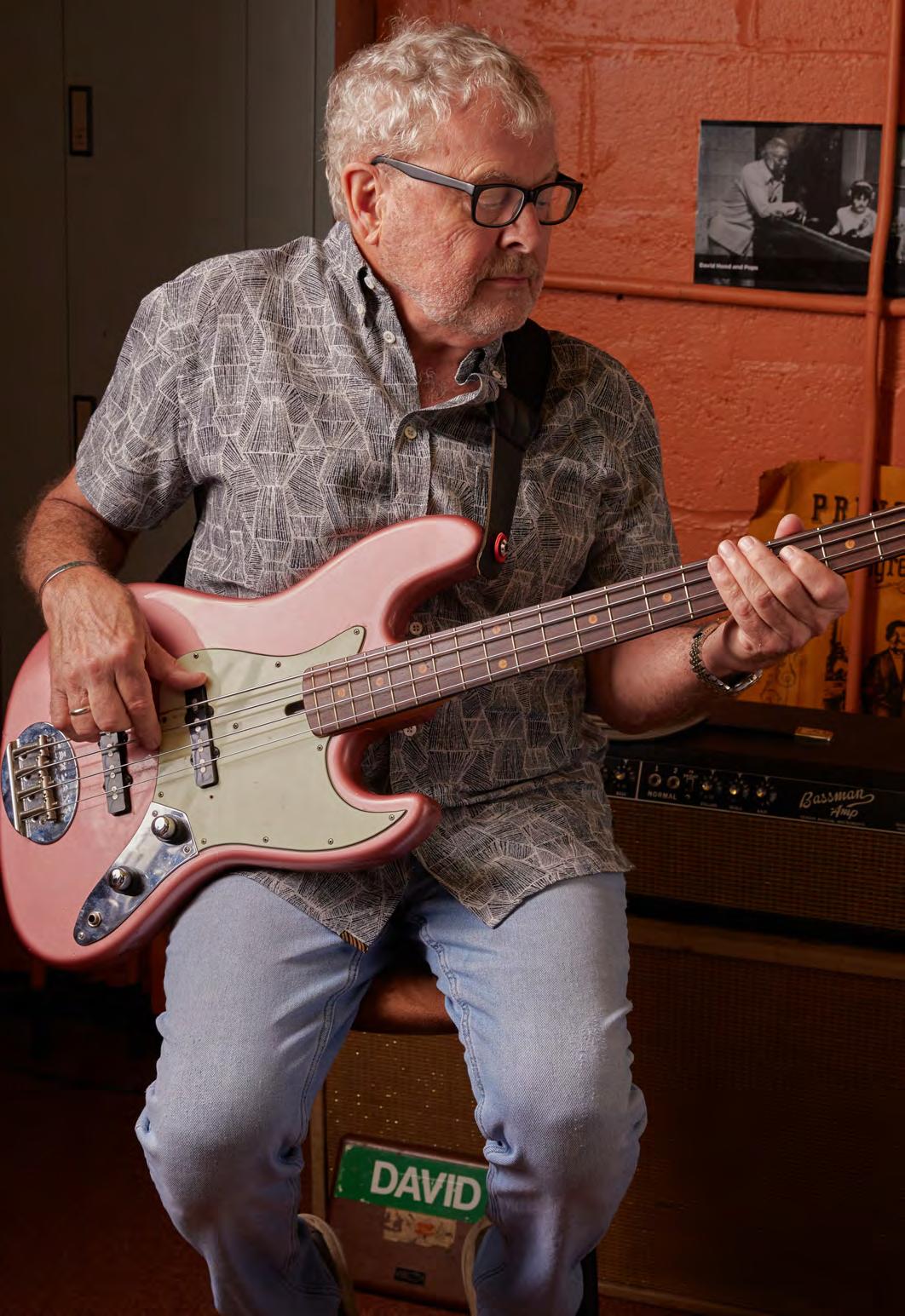


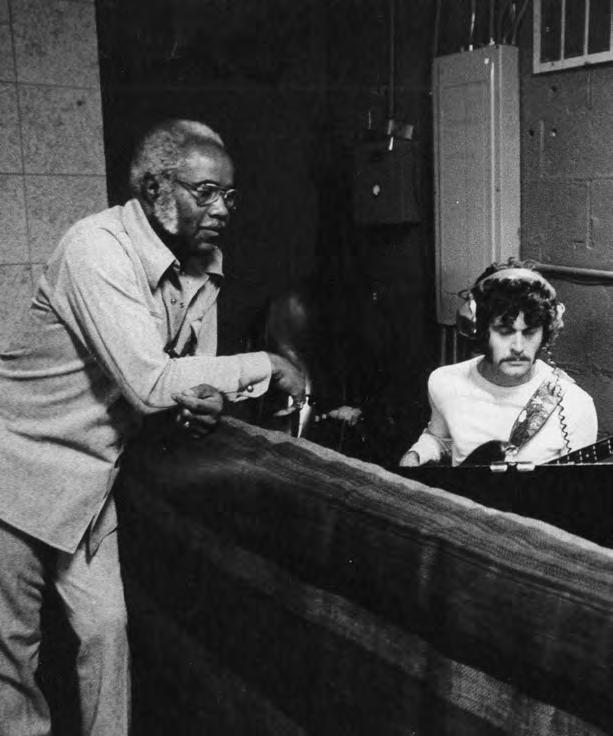
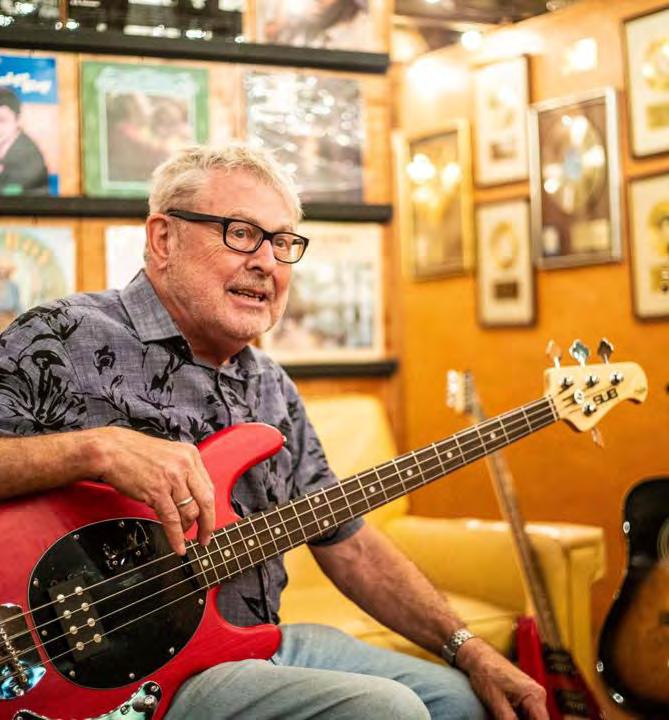
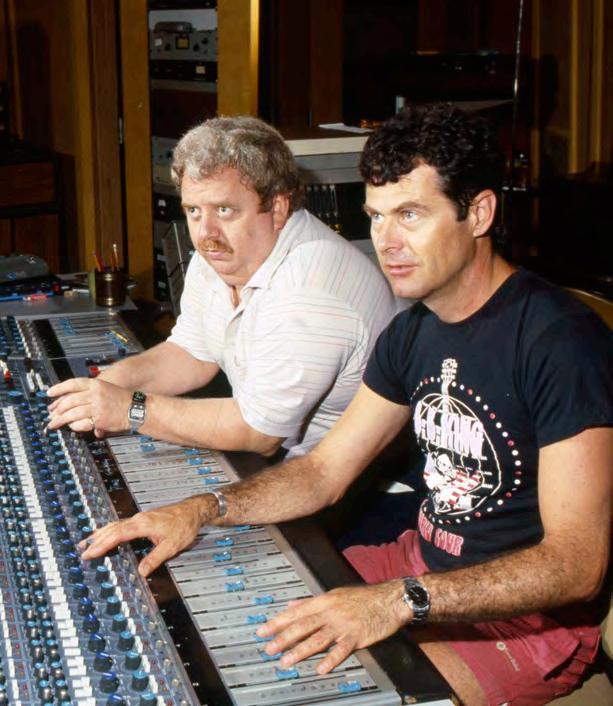 Above, clockwise from top left: Sign at the entrance of Muscle Shoals. Photo: Neil Brake, Birmingham News. Courtesy of Alabama Department of Archives and History, donated by Alabama Media Group; "Pops" Staples and David in the studio, courtesy of Muscle Shoals Sound Studio; Jimmy Johnson and David Hood in the control room at the Muscle Shoals Sound Studio. Photo: Neil Brake, Birmingham News Courtesy of Alabama Department of Archives and History, donated by Alabama Media Group; David in the studio basement.
Above, clockwise from top left: Sign at the entrance of Muscle Shoals. Photo: Neil Brake, Birmingham News. Courtesy of Alabama Department of Archives and History, donated by Alabama Media Group; "Pops" Staples and David in the studio, courtesy of Muscle Shoals Sound Studio; Jimmy Johnson and David Hood in the control room at the Muscle Shoals Sound Studio. Photo: Neil Brake, Birmingham News Courtesy of Alabama Department of Archives and History, donated by Alabama Media Group; David in the studio basement.
iconic bass lines in popular music. The unlikely story of a small community in north Alabama having a seismic impact on the world’s stage is well documented at this point, most significantly by the 2013 documentary Muscle Shoals, but even David still marvels at it.
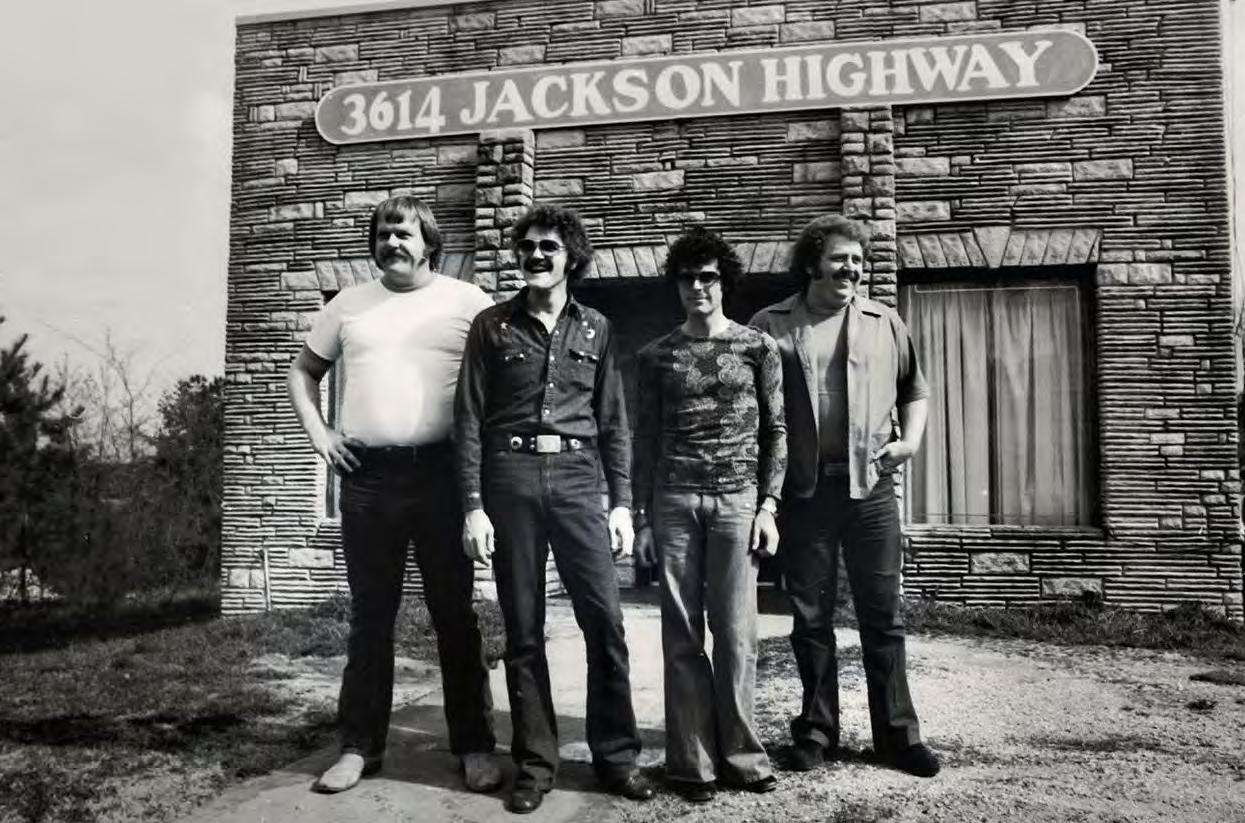
“I started playing the bass at 18, and by 24, maybe 25, I’d played on million-selling records. I’m not that good a player; it’s just that we were lucky. We were in the right place at the right time, and we had an attitude that nothing mattered more than us doing our job and doing the best we could. And I think that showed,” he recalls.
While music fans might take issue with David’s assessment of his own skill level, they would undoubtedly agree that the workman-like attitude he and his peers assumed paid off. There is no grandiosity when he points out that he’s played on these massively successful records, only a quiet amazement. He still remembers the first day he was paid to play bass in the studio.
“May 15th, 1966, we cut the Percy Sledge song ‘Warm and Tender Love.’ It was the follow-up to ‘When A Man Loves A Woman.’ And it was a gold record. I thought, ‘Good Lord, I think I’ll keep doing this.’”
Through working at studios like FAME and with producers like Rick Hall and Quin Ivy, David Hood developed the now-famous rapport with drummer Roger Hawkins and guitarist/engineer Jimmy Johnson. In 1969, they opened Muscle Shoals Sound Studio after bringing in keyboardist Barry Beckett as the fourth partner.
“It was a big deal to borrow money, and no rhythm section had ever owned their own studio. We made a deal that we were not going to work for anybody unless they worked here, at our studio. And they weren’t going to break us up. If they wanna use any of us, they’ve gotta use all of us.”
That deference to the group, love of the craft, and service to the song is a common thread when he speaks about music. He gave up ambitions with the guitar after realizing “the other guitar player was a whole lot better than I was” in his first band. He picked up the bass and started listening closer to records.
“None of us were rich kids or anything. My father had a tire store, but I worked my ass off at that tire store, and I’m so glad I’m not there. Jimmy’s father worked out at the aluminum plant, and Roger’s father was a shoe salesman,” said David.
“I love playing the bass. My ear has always gone to support instruments. I played trombone in the school band, and I loved the different parts, you know, the different parts than just the lead parts.
 David during a session recording at Cypress Moon Studios in Sheffield, AL, 2019. Photo: Jan A. Bruso (janbruso.com).
David during a session recording at Cypress Moon Studios in Sheffield, AL, 2019. Photo: Jan A. Bruso (janbruso.com).
"We were in the right place at the right time..."
Everybody knows what a guitar player is doing, you can hear the guitar player, but the bass, you don’t really know what they’re supposed to do. And I had to listen to James Jamerson and Duck Dunn and all these people on records because they weren’t copying anybody. They were coming up with their own stuff. But it couldn’t be too much, it had to work for sessions or for records.”
It all goes back to the records and the studio. David Hood and Roger Hawkins toured with English rock band Traffic in the 1970s but otherwise made a career by compelling music industry legends like Jerry Wexler of Atlantic and Al Bell of Stax to send their artists to a small town in Alabama.
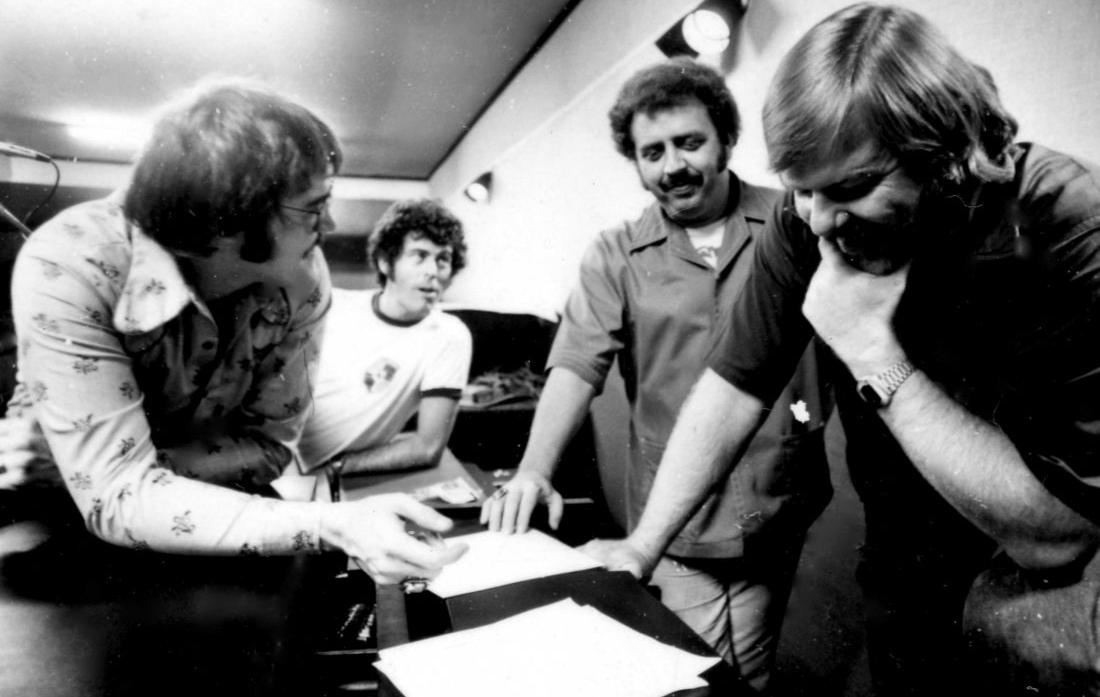
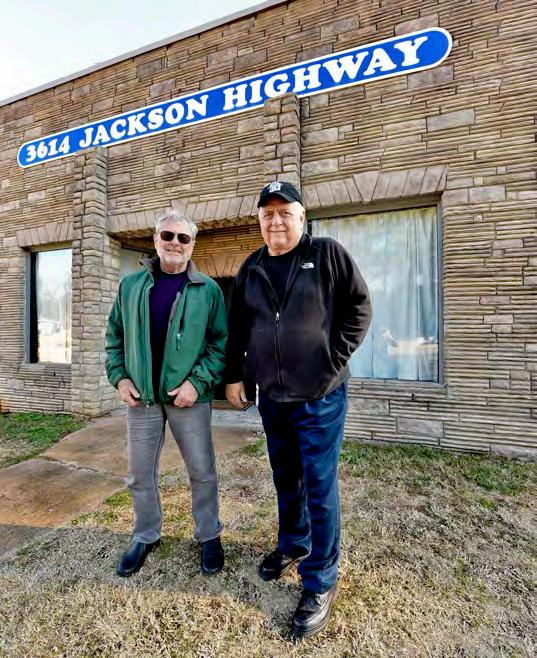 Roger Hawkins, David Hood, Jimmy Johnson, and Barry Beckett in the studio, 1976.
Photo: Dick Cooper, courtesy of Muscle Shoals Sound Studio.
Roger Hawkins, David Hood, Jimmy Johnson, and Barry Beckett in the studio, 1976.
Photo: Dick Cooper, courtesy of Muscle Shoals Sound Studio.
“Our business was people cutting records, and they won’t come back if you don’t do something where they have a success. We stayed busy. And the times we would get unbusy, we’d all sweat and worry about it, but we’d get busy again. And that was good. We worked for a long time.”
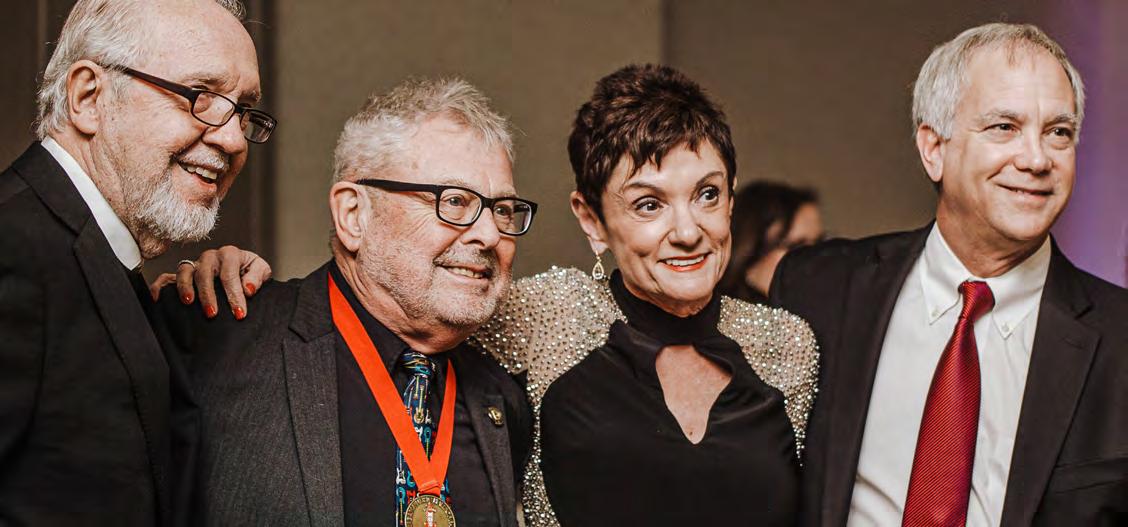
And he’s still working. David can be found in the studio on any given day with younger generations of Shoals artists, playing with that same dedication to craft that makes being a musician in Alabama seem feasible to the countless people following in his footsteps. His stories supply a glimpse into what’s possible, and his attitude of humility and quiet confidence in those around him provide a blueprint for musical community. It’s a cliche that artists can grow jaded with success and time, so I have to ask how he feels if a song like “I’ll Take You There” comes on when he’s in public.
“I can’t not say something. [My wife] Judy has heard me say, ‘Oh, I played on that record!’ And I know she goes, ‘God, I know he’s played on all these records….’ I’m sure she gets tired of it, but she’s a good sport. And you know, I love to hear it. I love to hear stuff that we did.”
As he leaves the basement of the studio he helped make world-famous, he looks across the highway towards the sprawling Oakwood Cemetery and notes that his childhood home was just on the other side. His father’s tire shop was down the road, he says, pointing southwest along Jackson Highway.
“I think it’s the greatest thing I ever did, was stay here.” ◆
Above: Backstage before the 2020 Alabama Music Hall of Fame Induction Banquet. L to R: Norbert Putnam, David Hood, Judy Hood, and Marty Abroms. Courtesy of Alabama Music Hall of Fame. Opposite page, clockwise from top left: David receives an honorary degree from the University of North Alabama in December 2021. L to R: Lilla Hood, Judy Hood, David Hood, Traci Thomas, and Alan Daigre. Courtesy of UNA; at Muscle Shoals Sound Studios, 2021. Courtesy of Billy Reid; David and his son, Patterson Hood of the Drive-By Truckers, pose with the one-of-a-kind Alabama Jammer guitar for "The Year of Alabama Music" campaign in 2011. Courtesy of Alabama Tourism Department; David joins Mavis Staples on stage during her set at the inaugural ShoalsFest music festival in 2019. Photo: Russ Corey, Times Daily